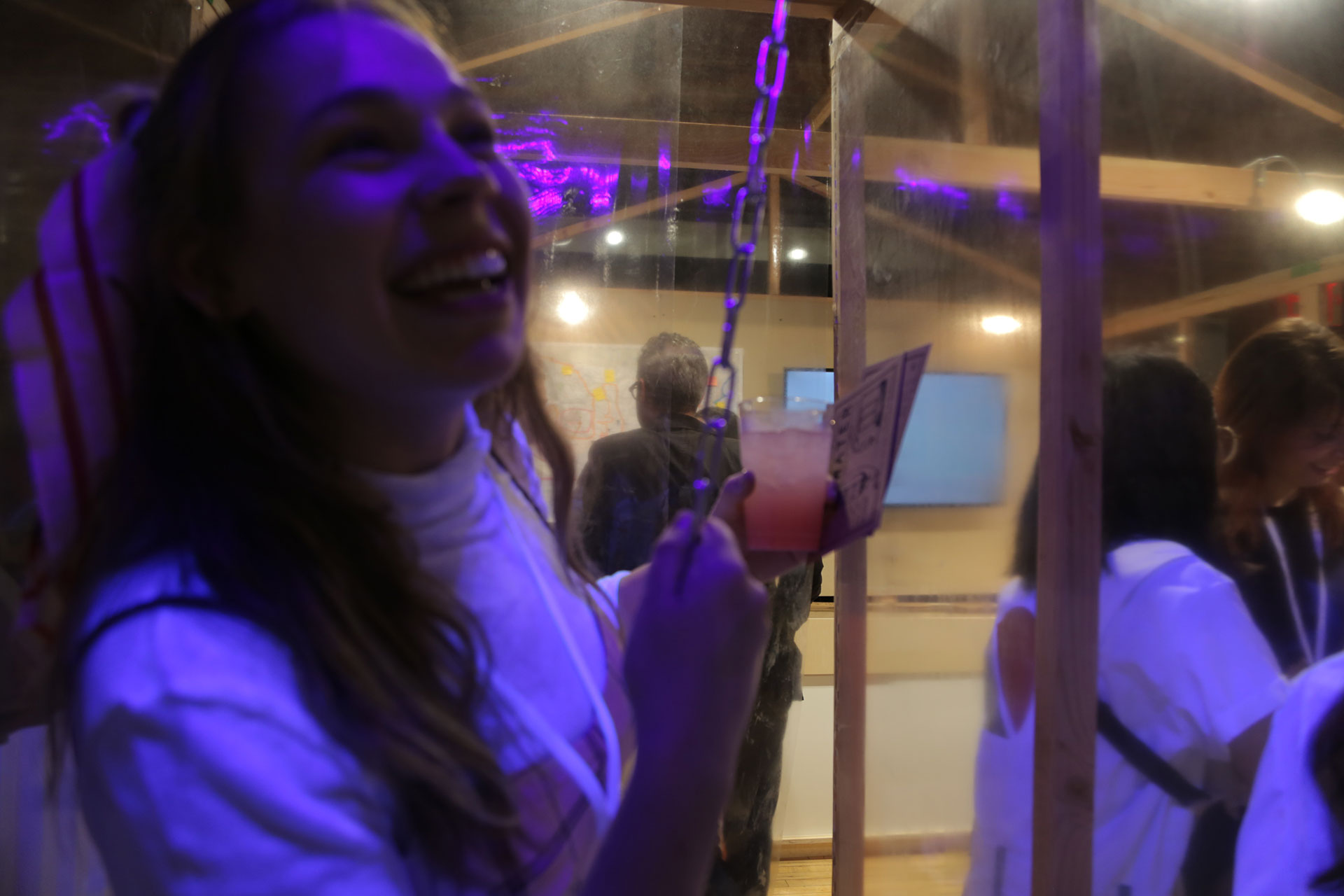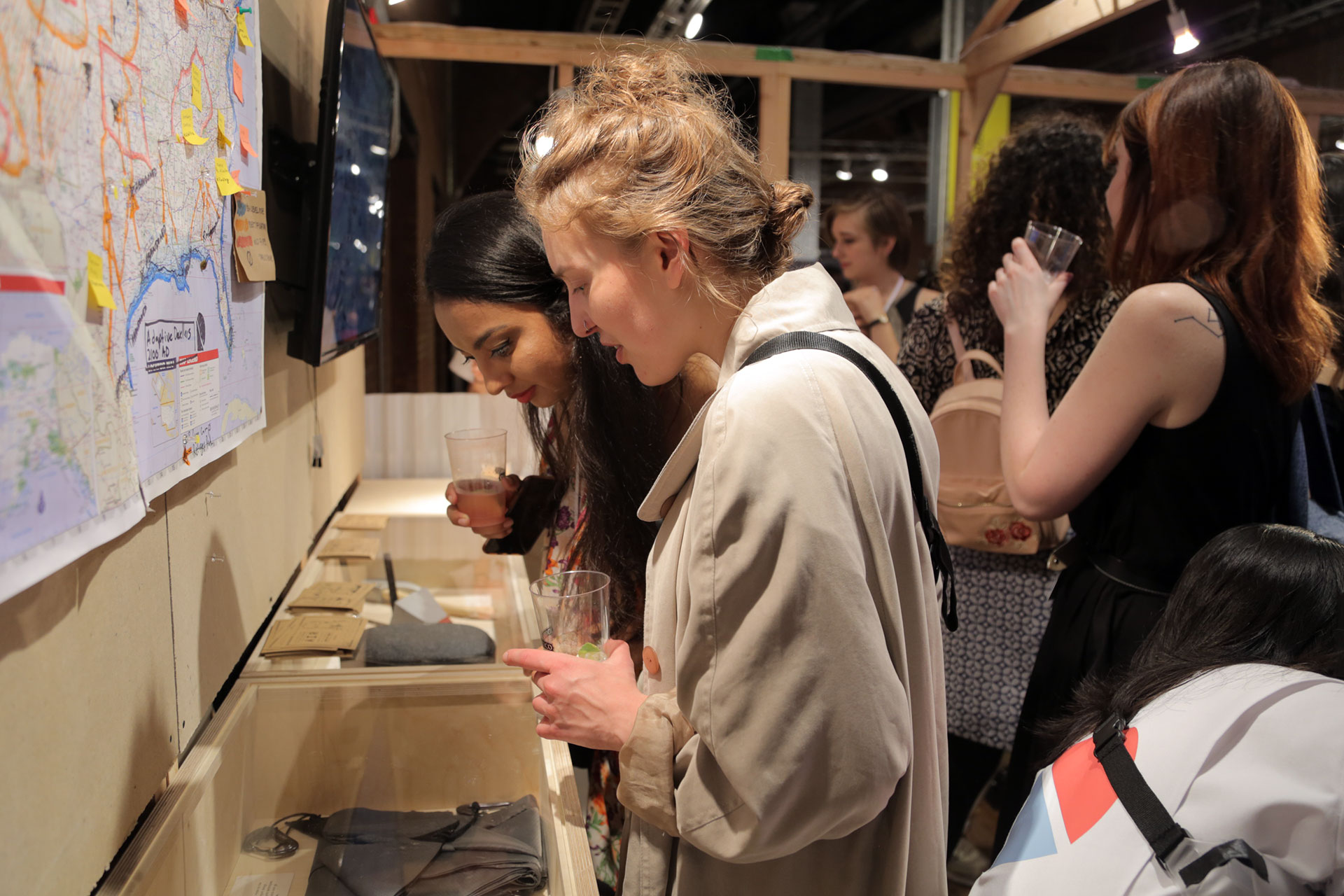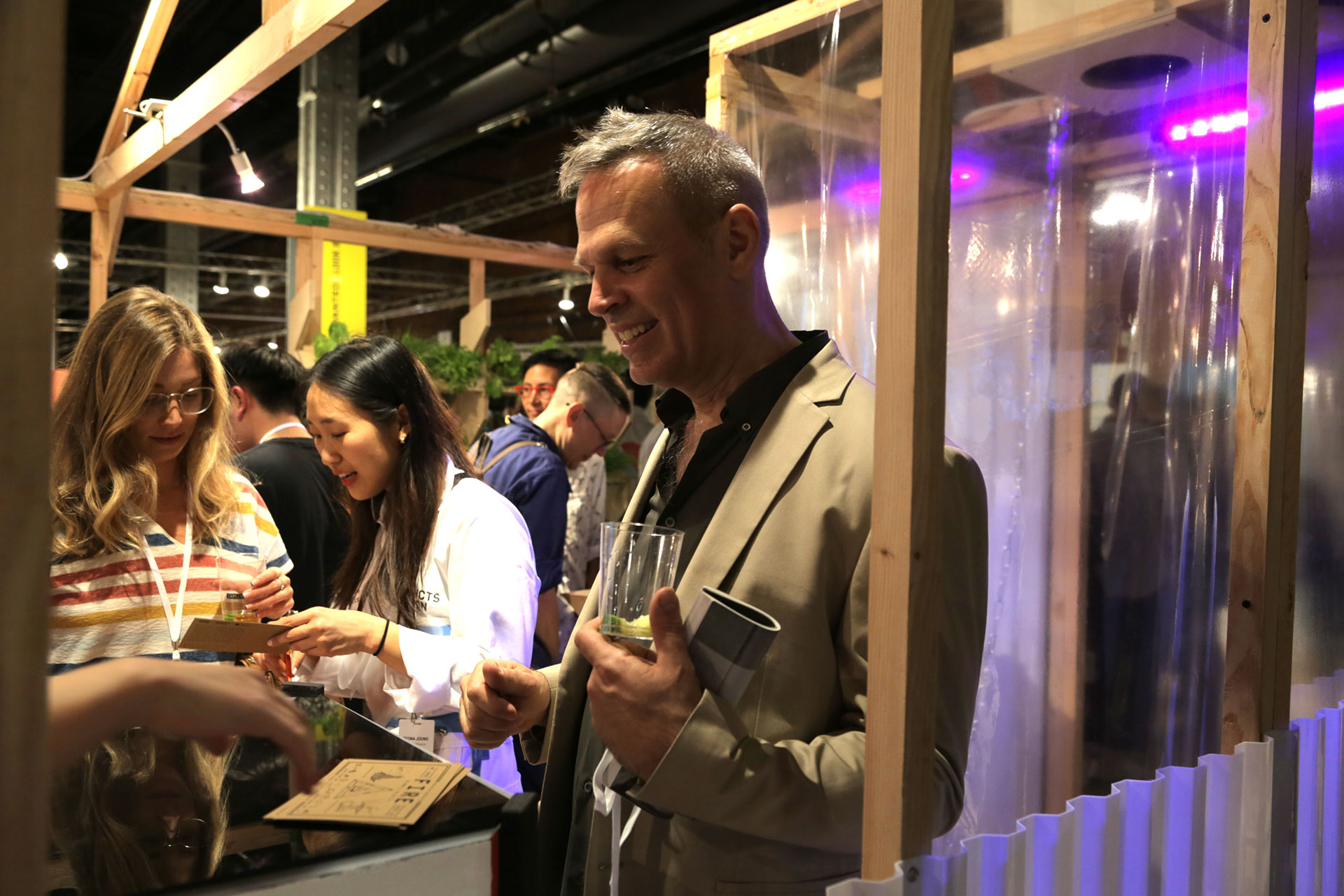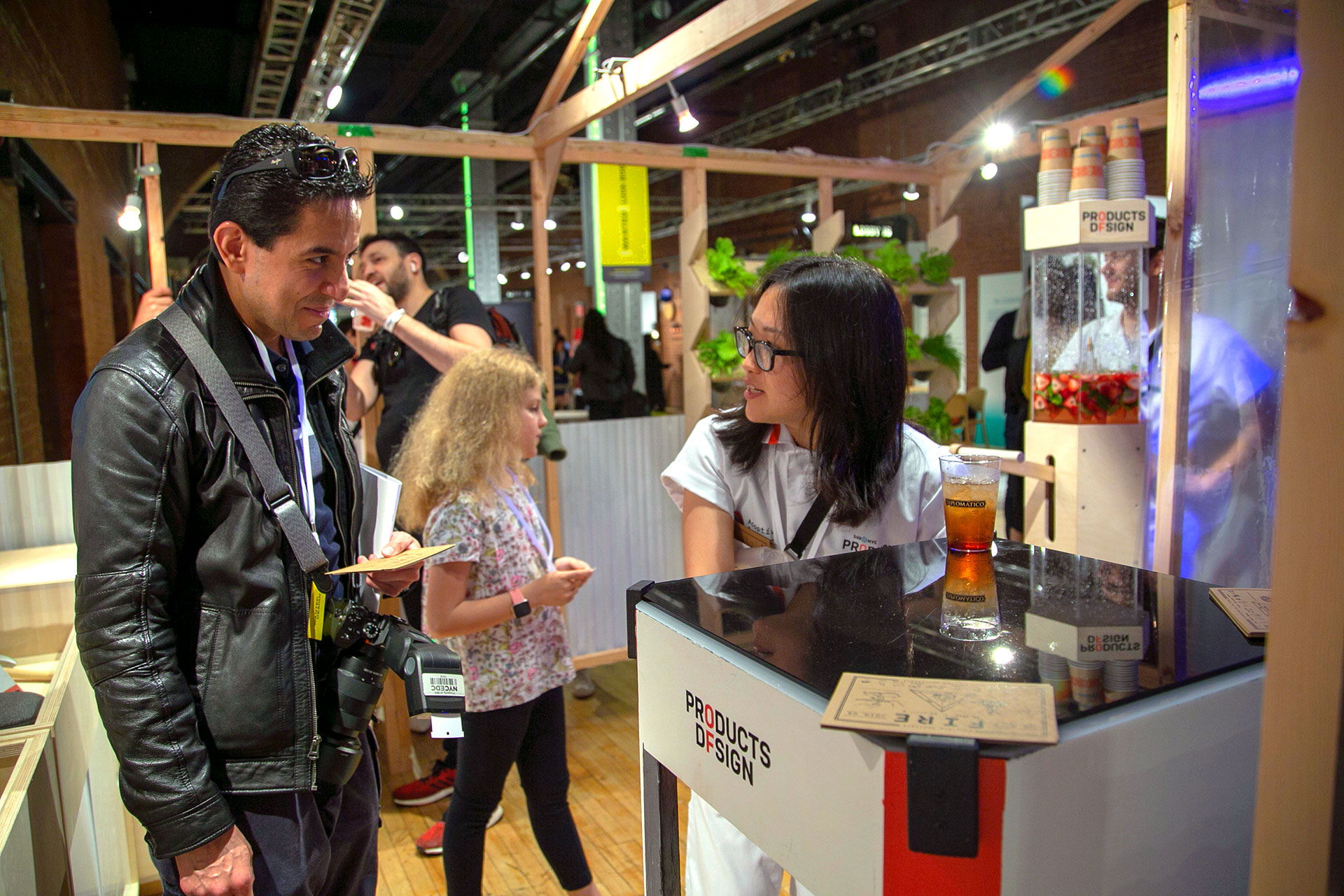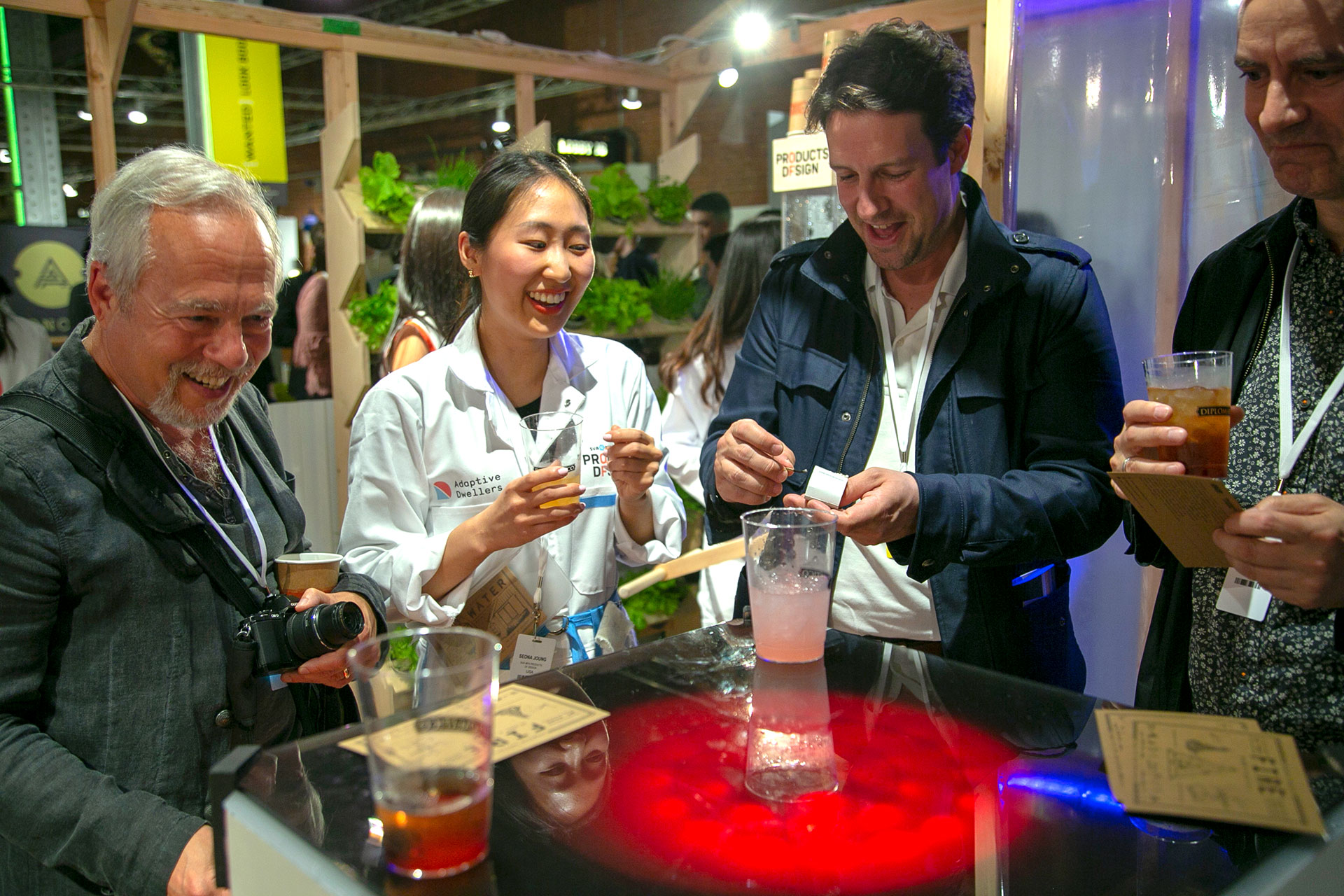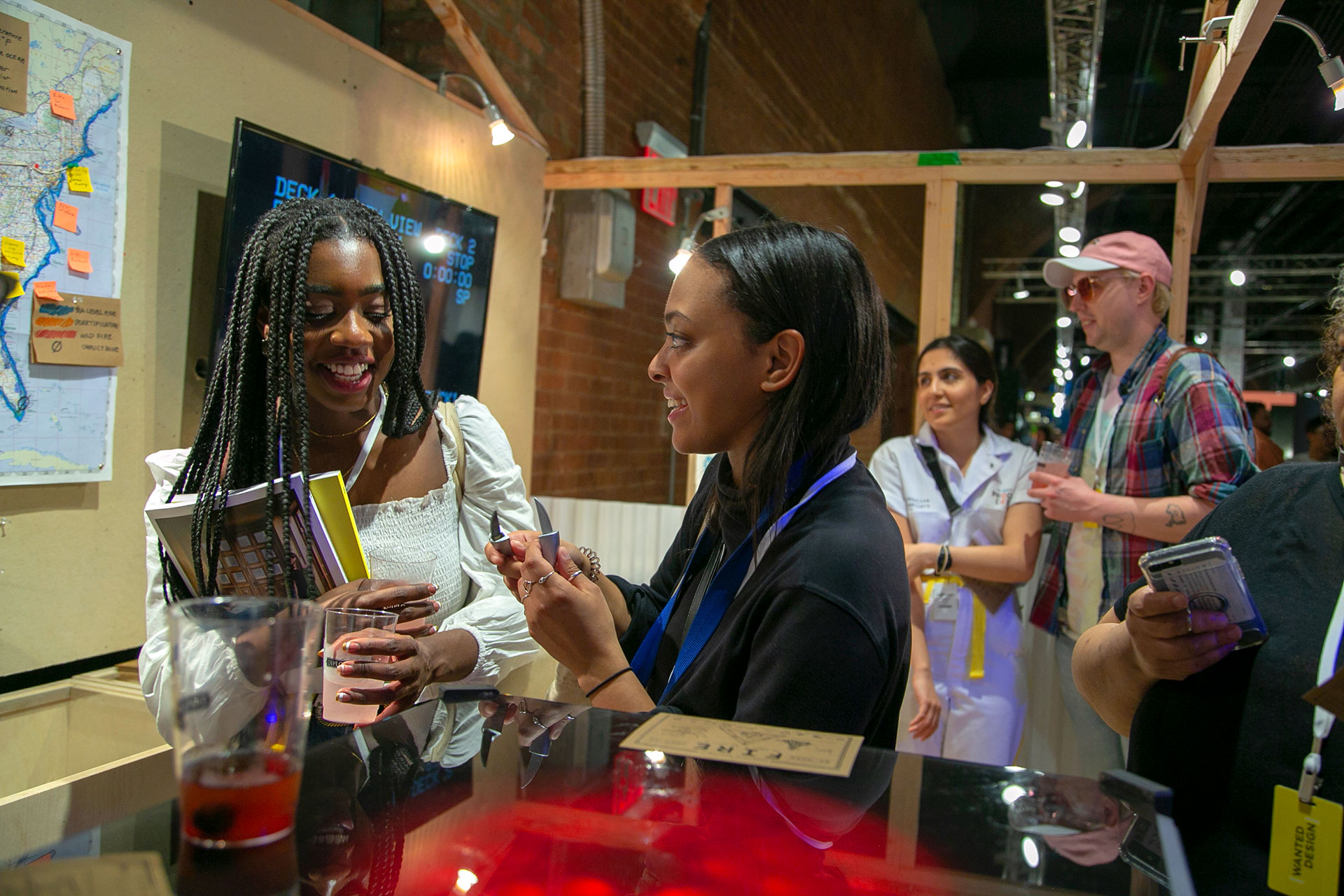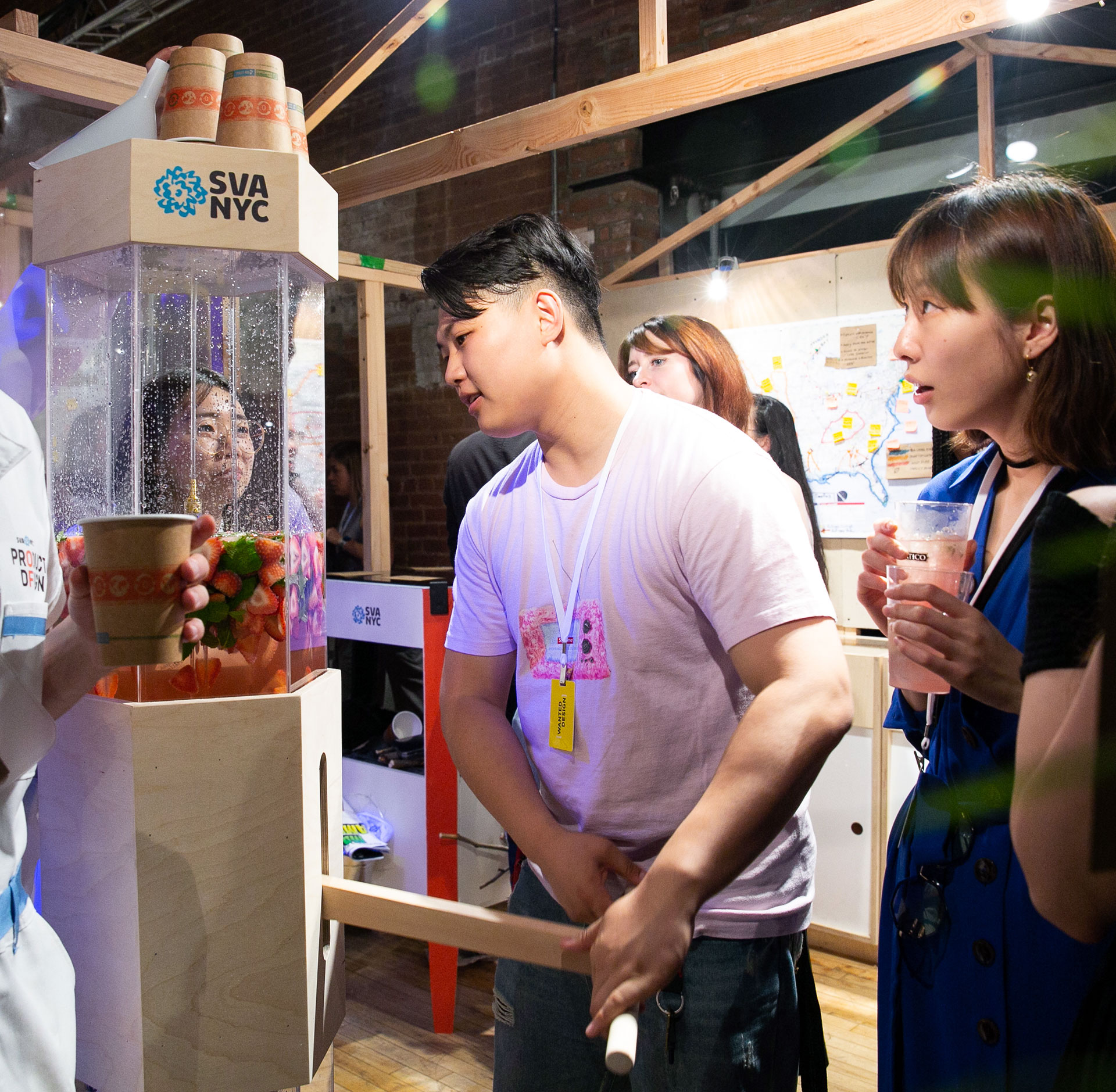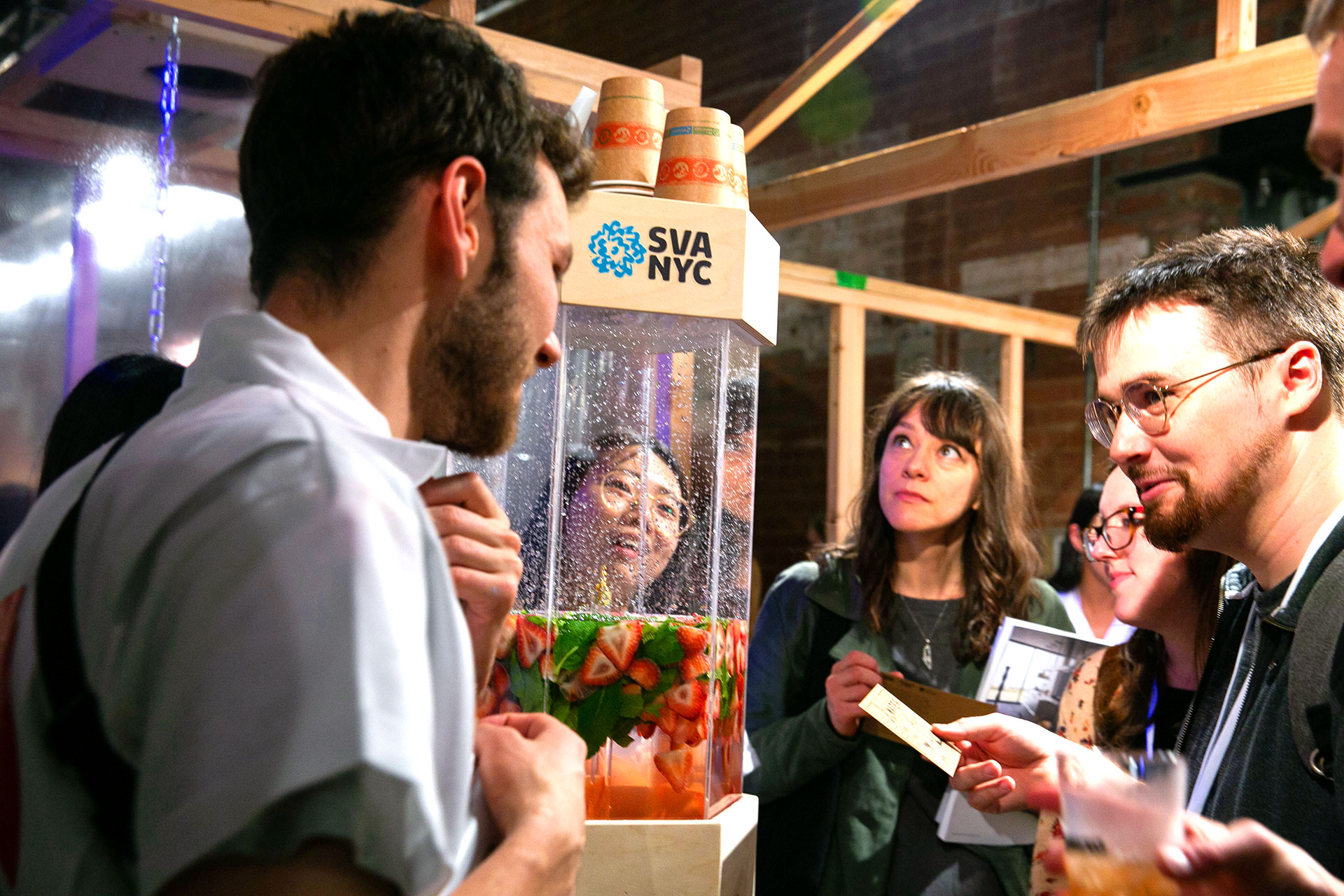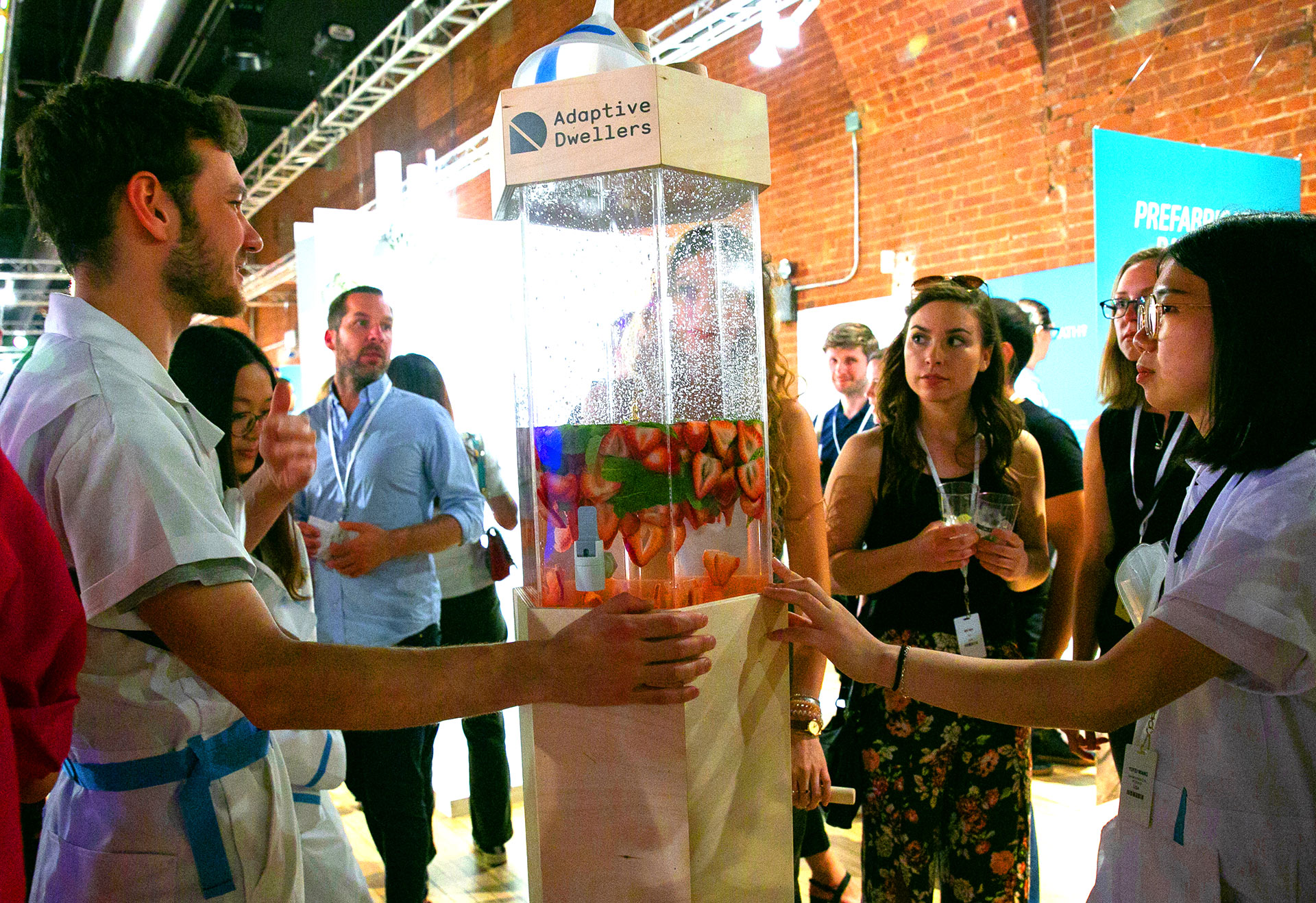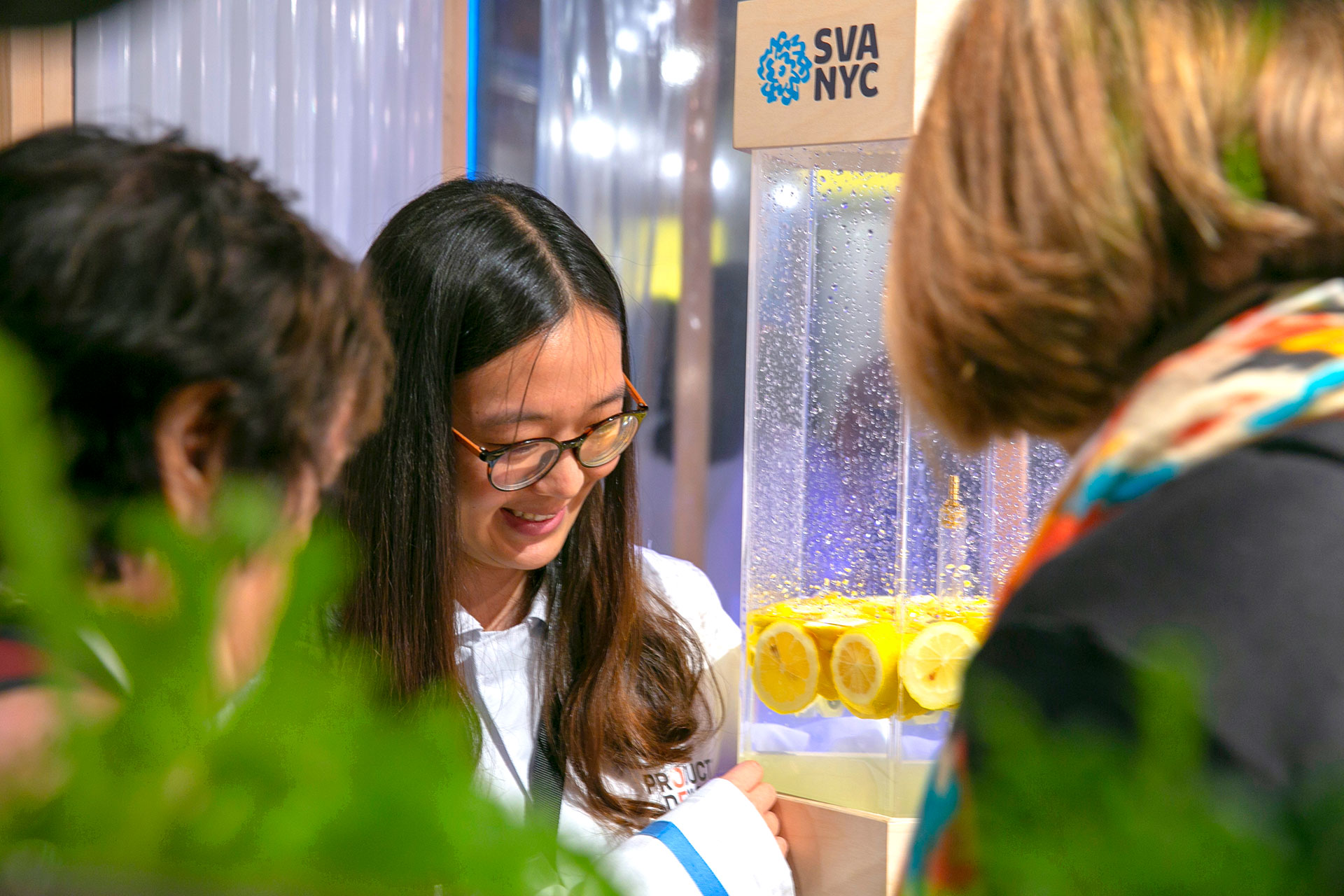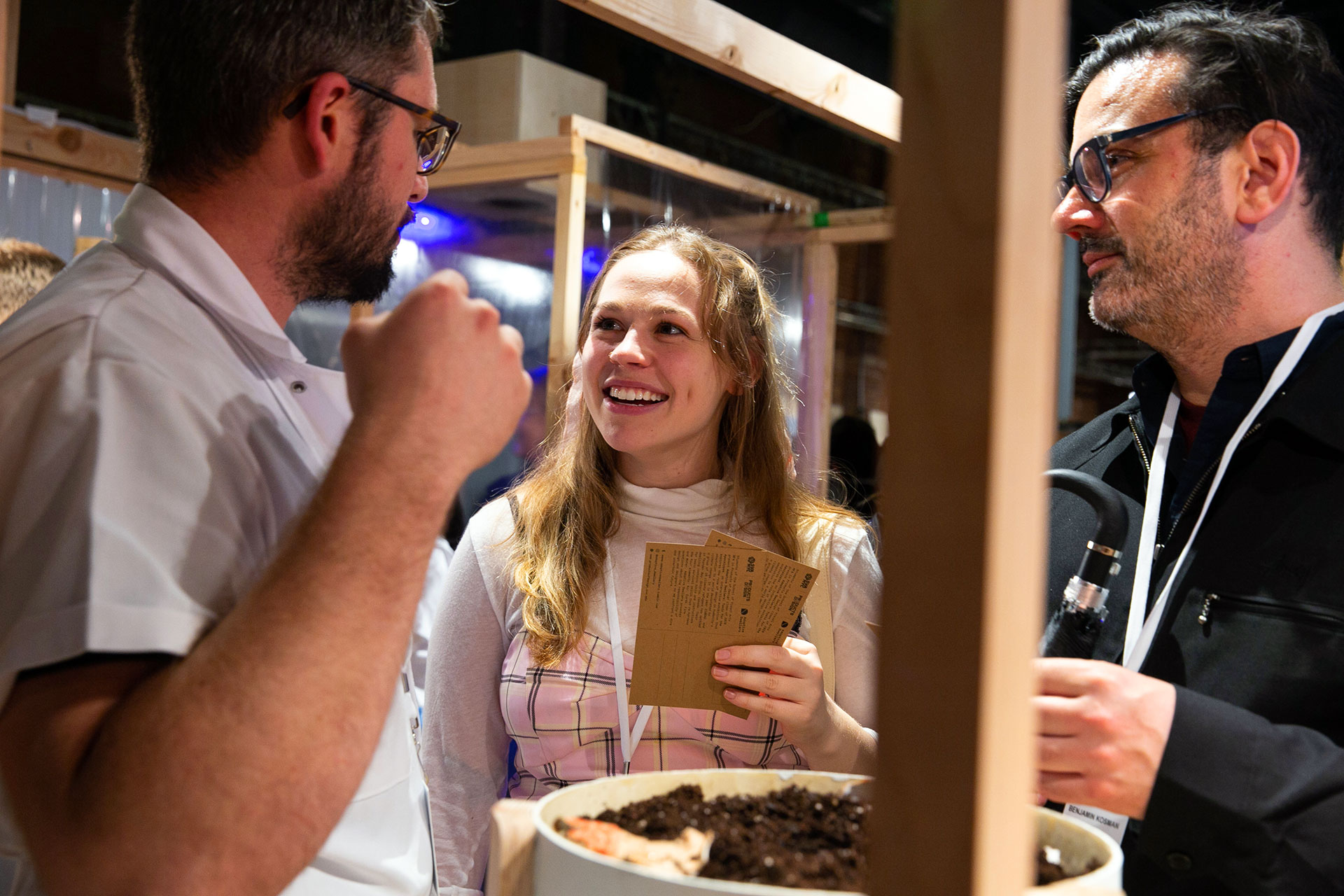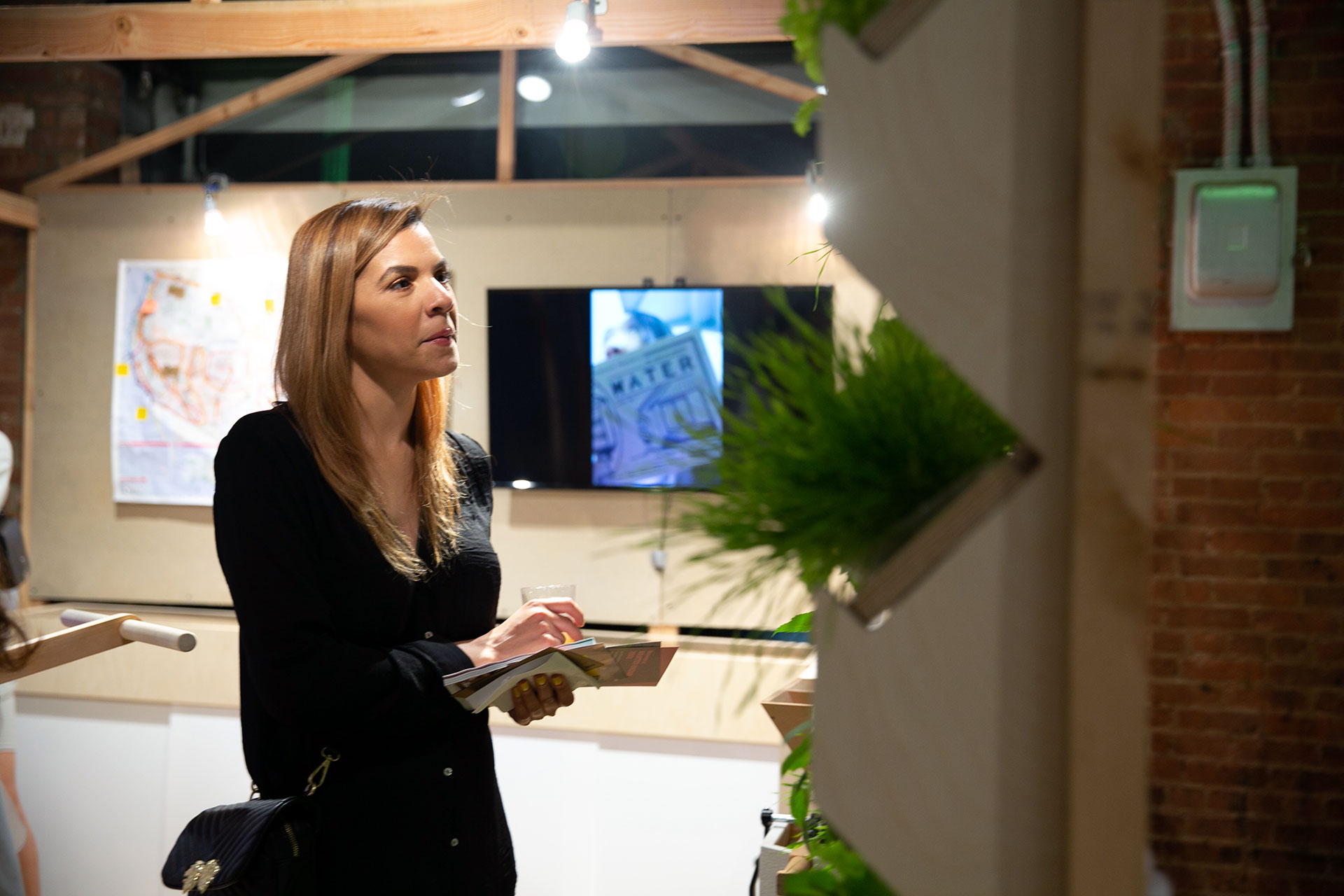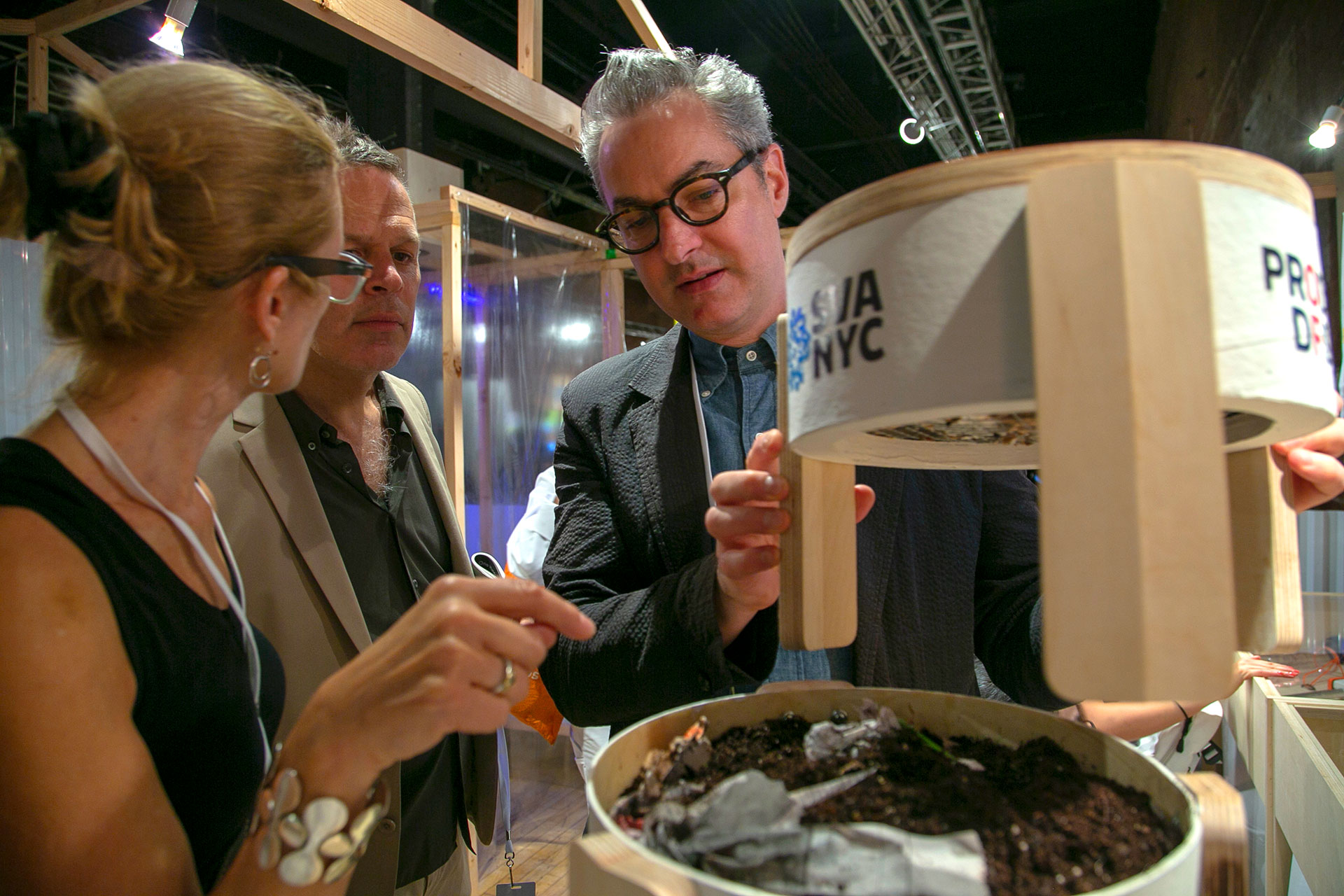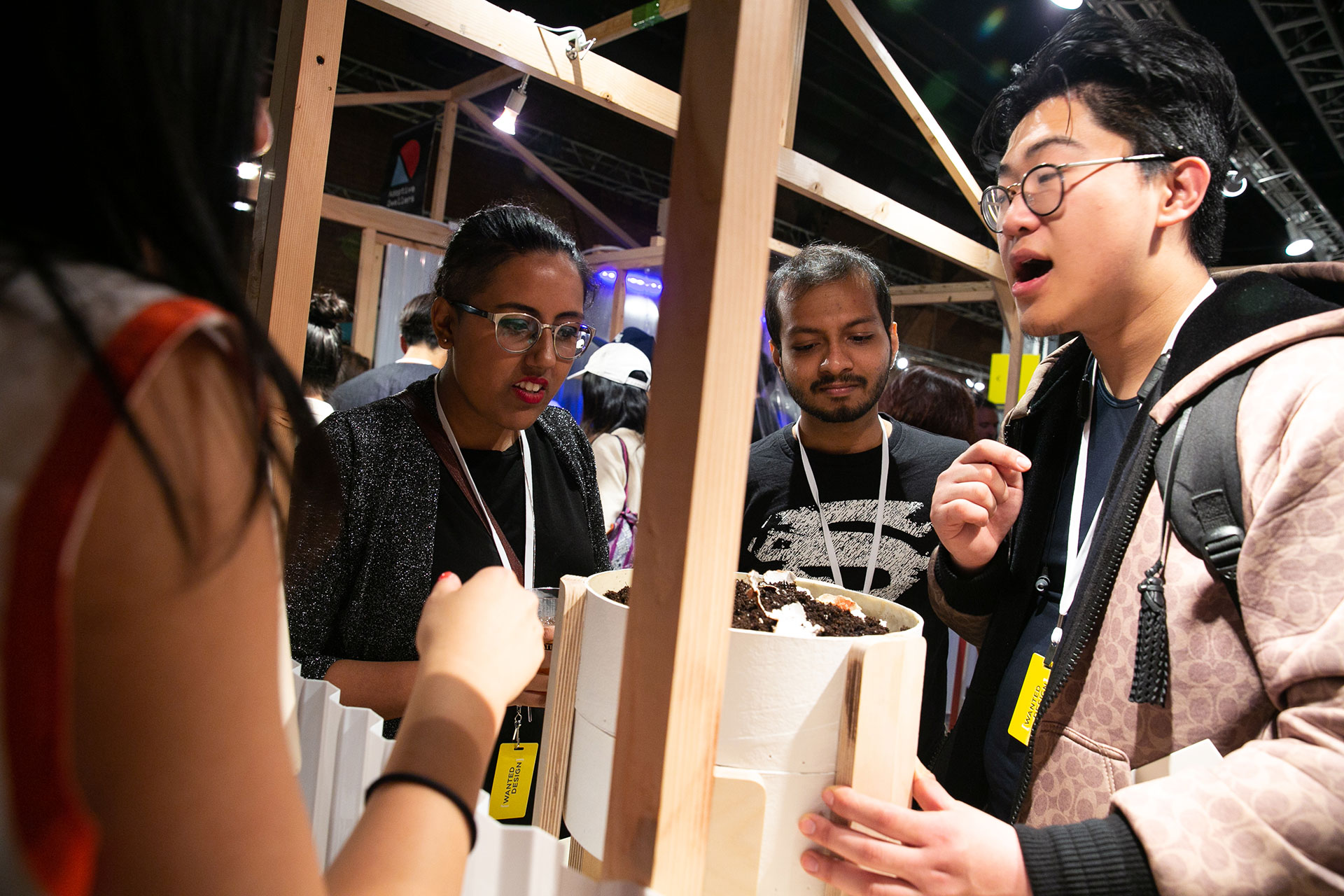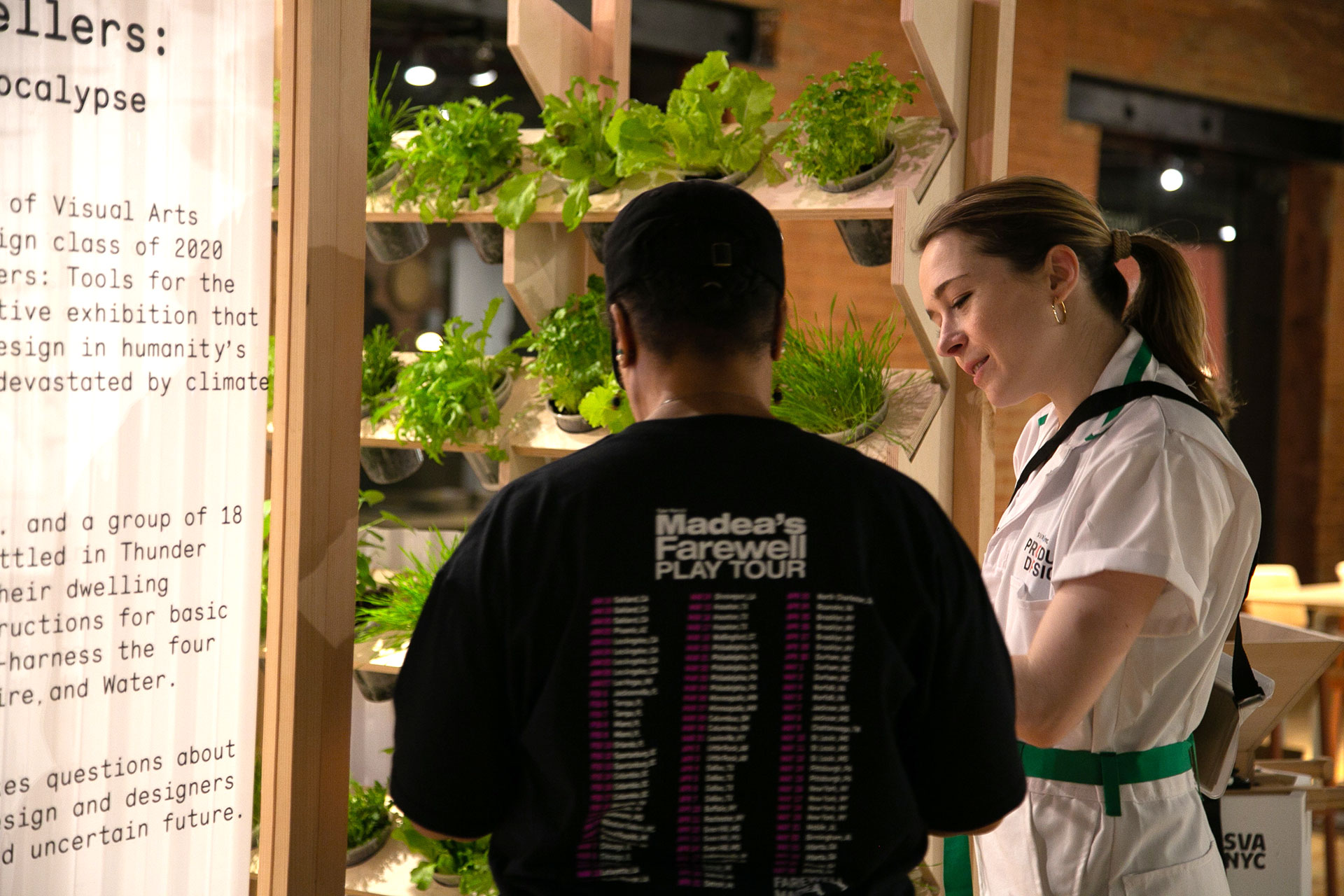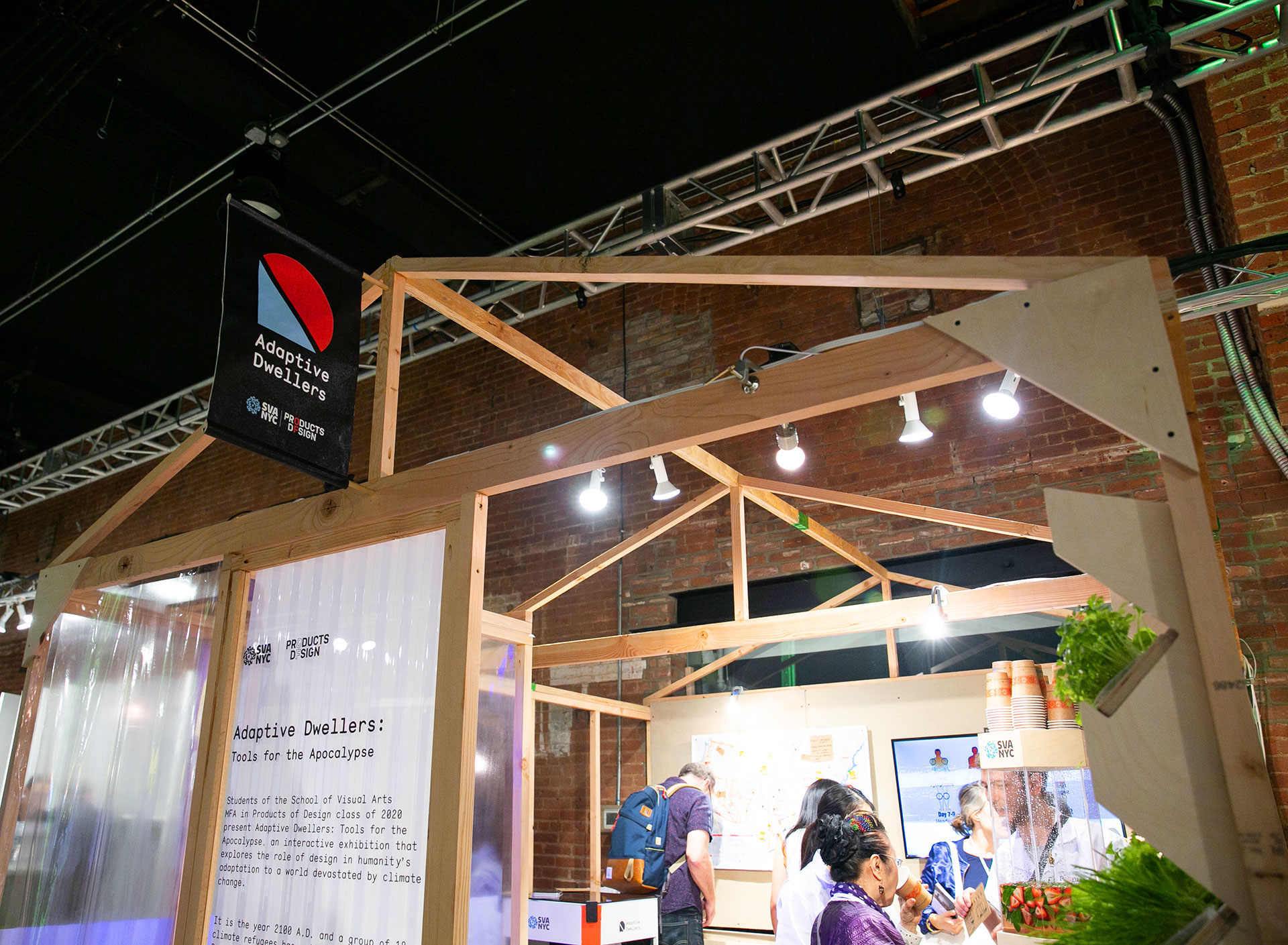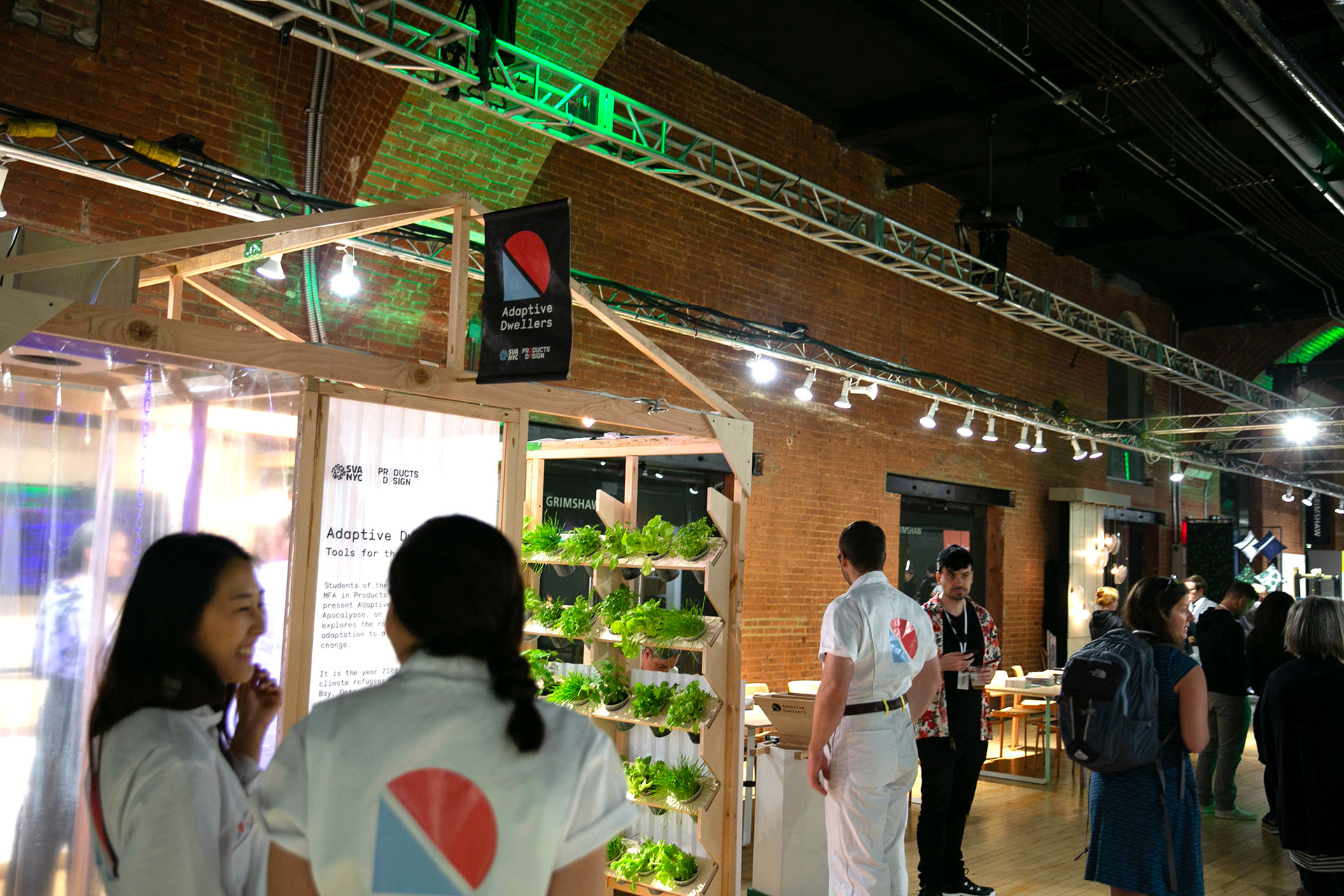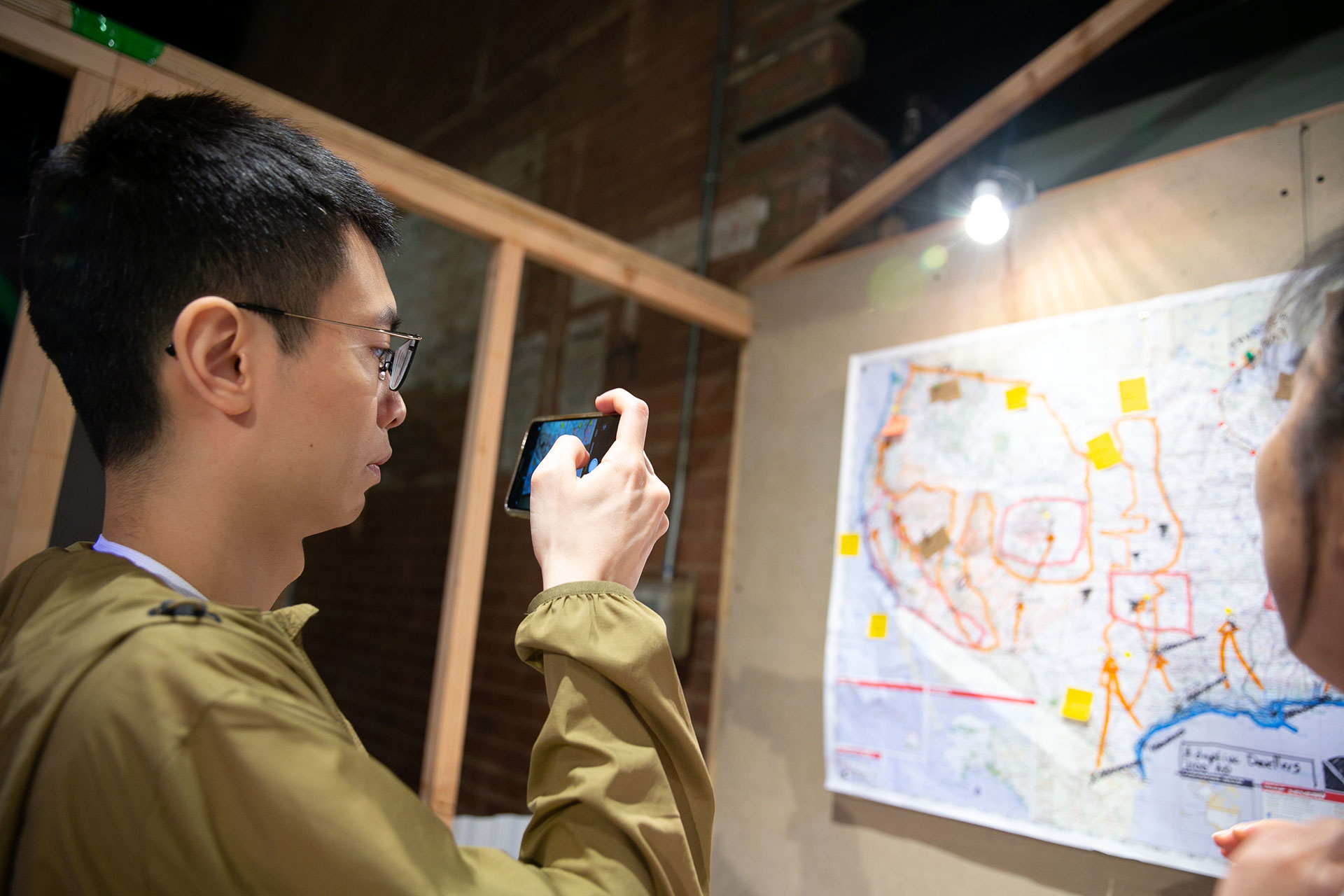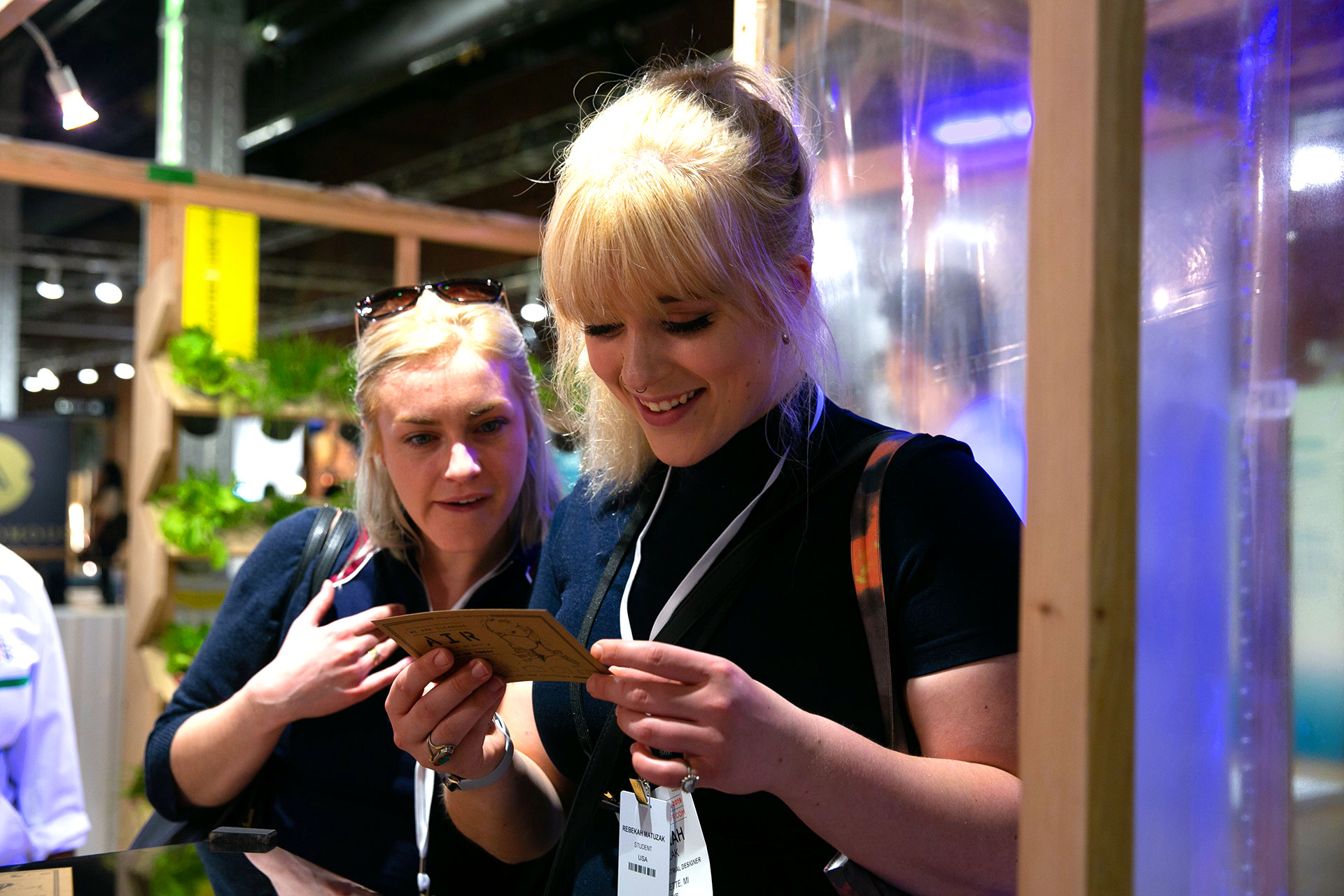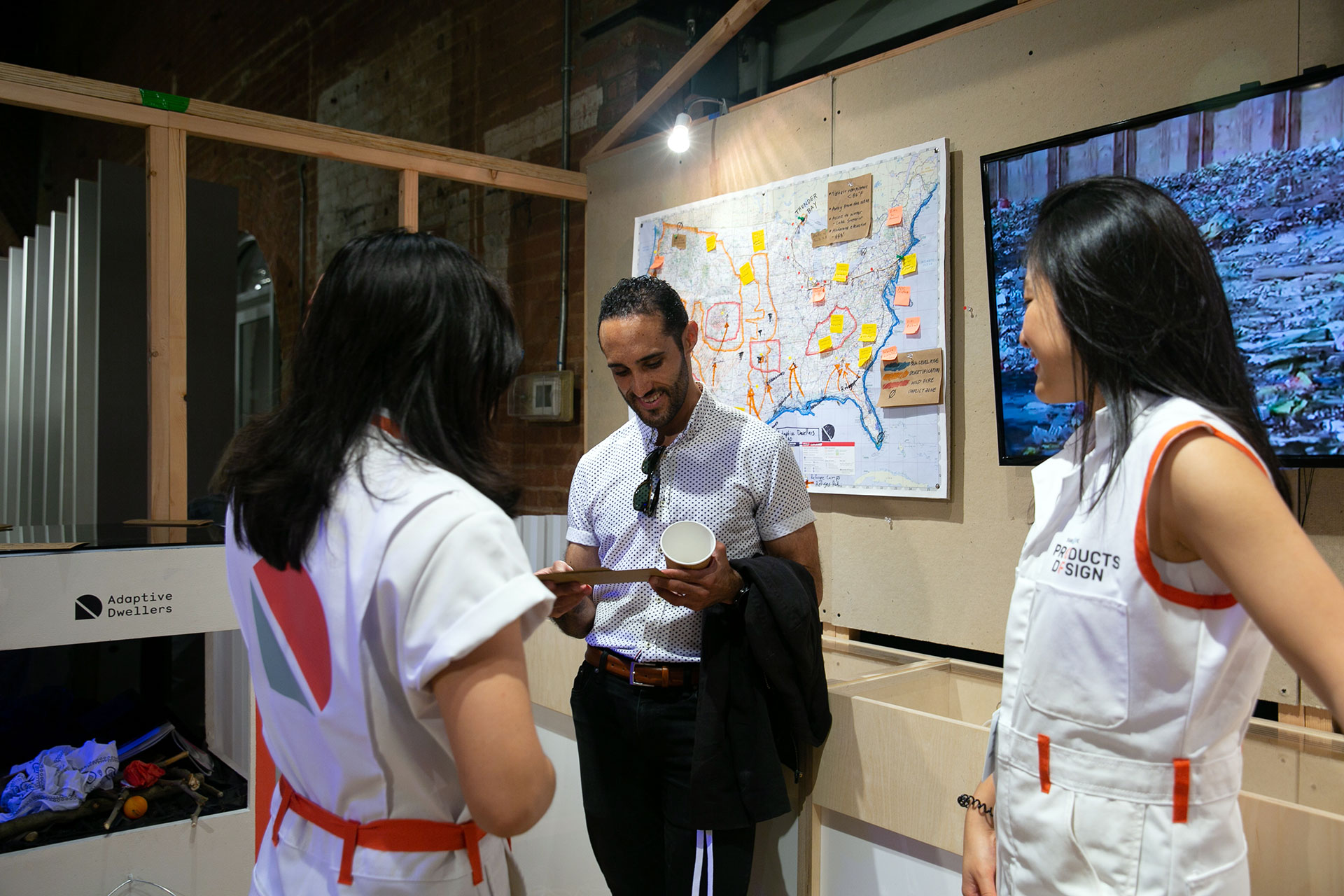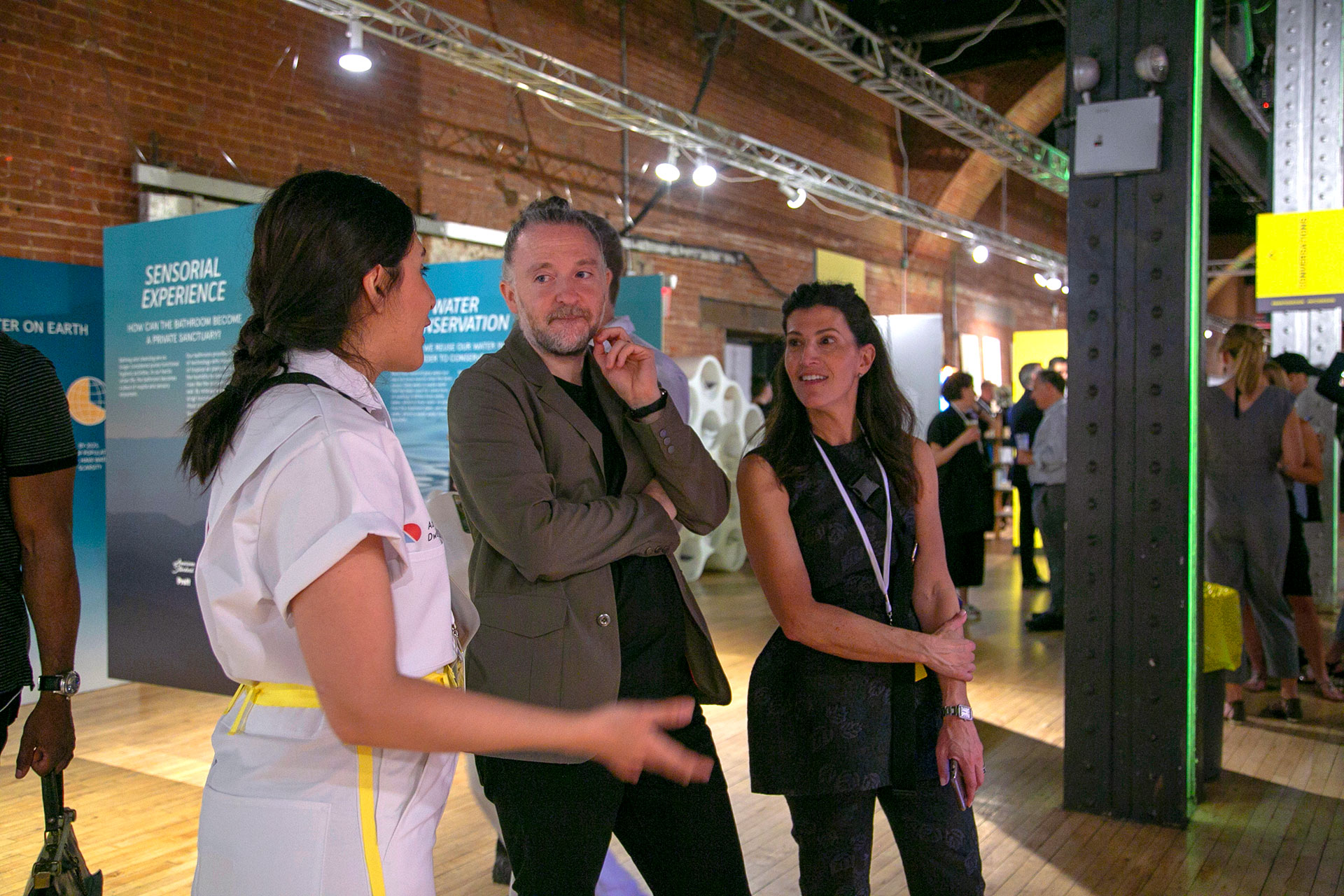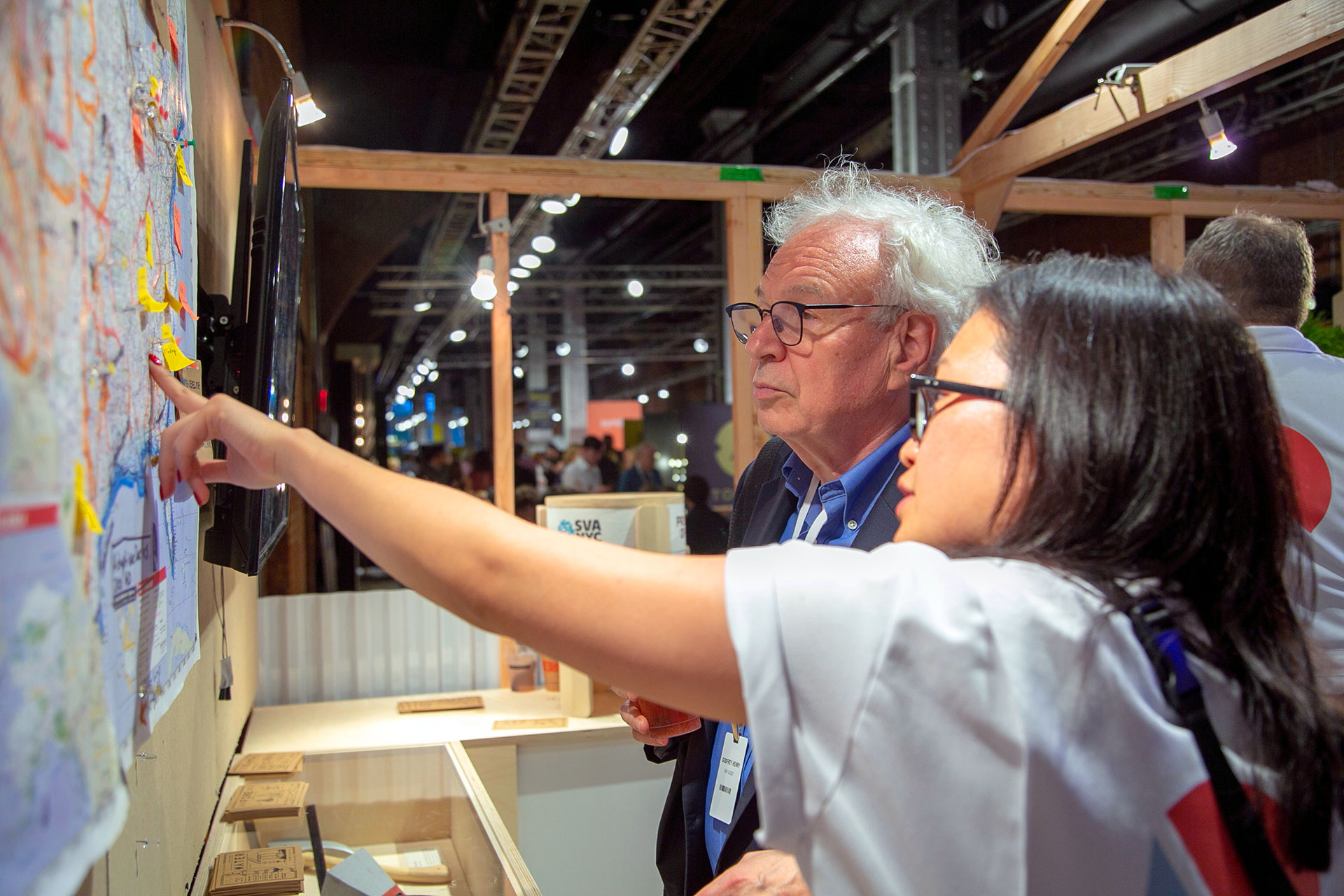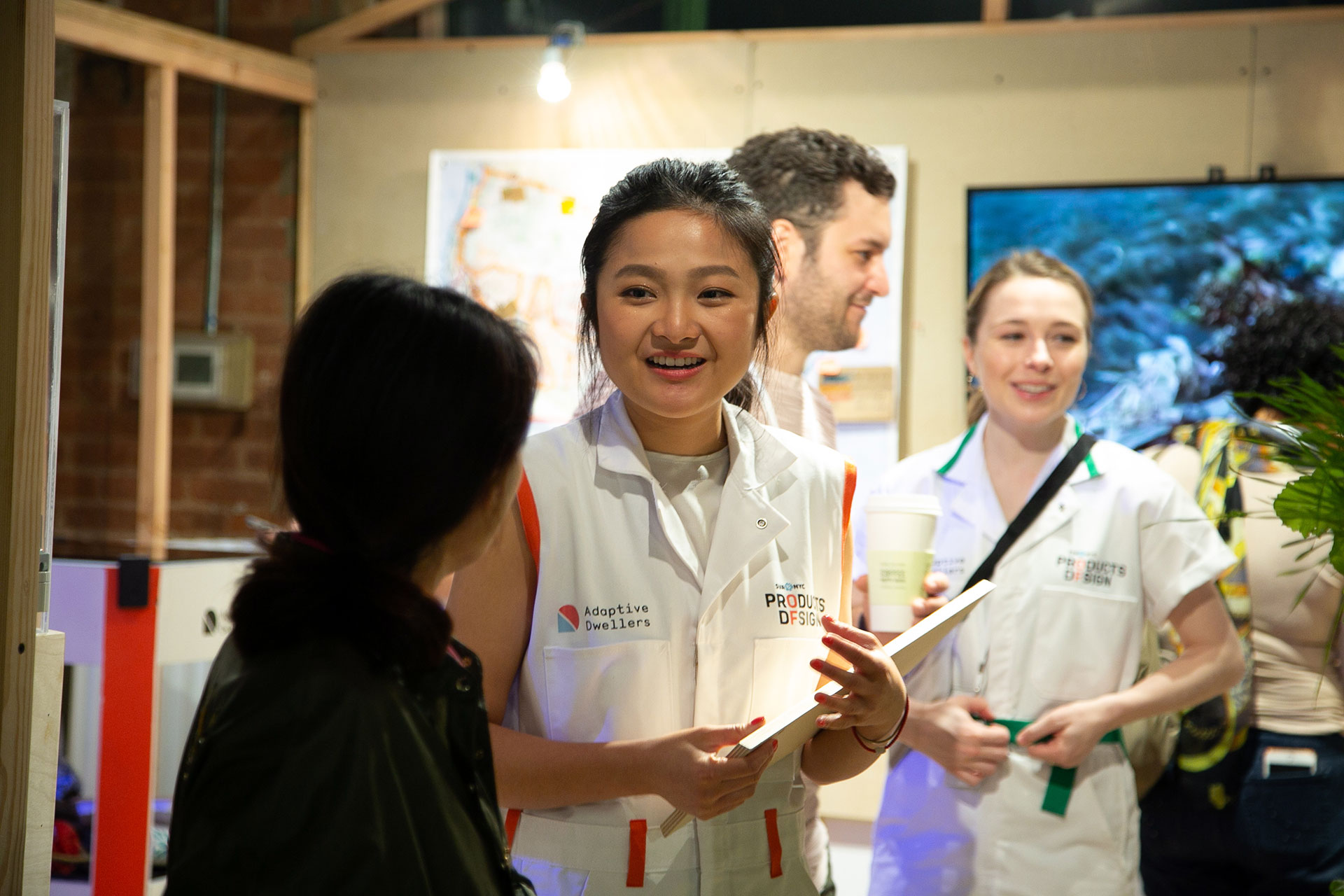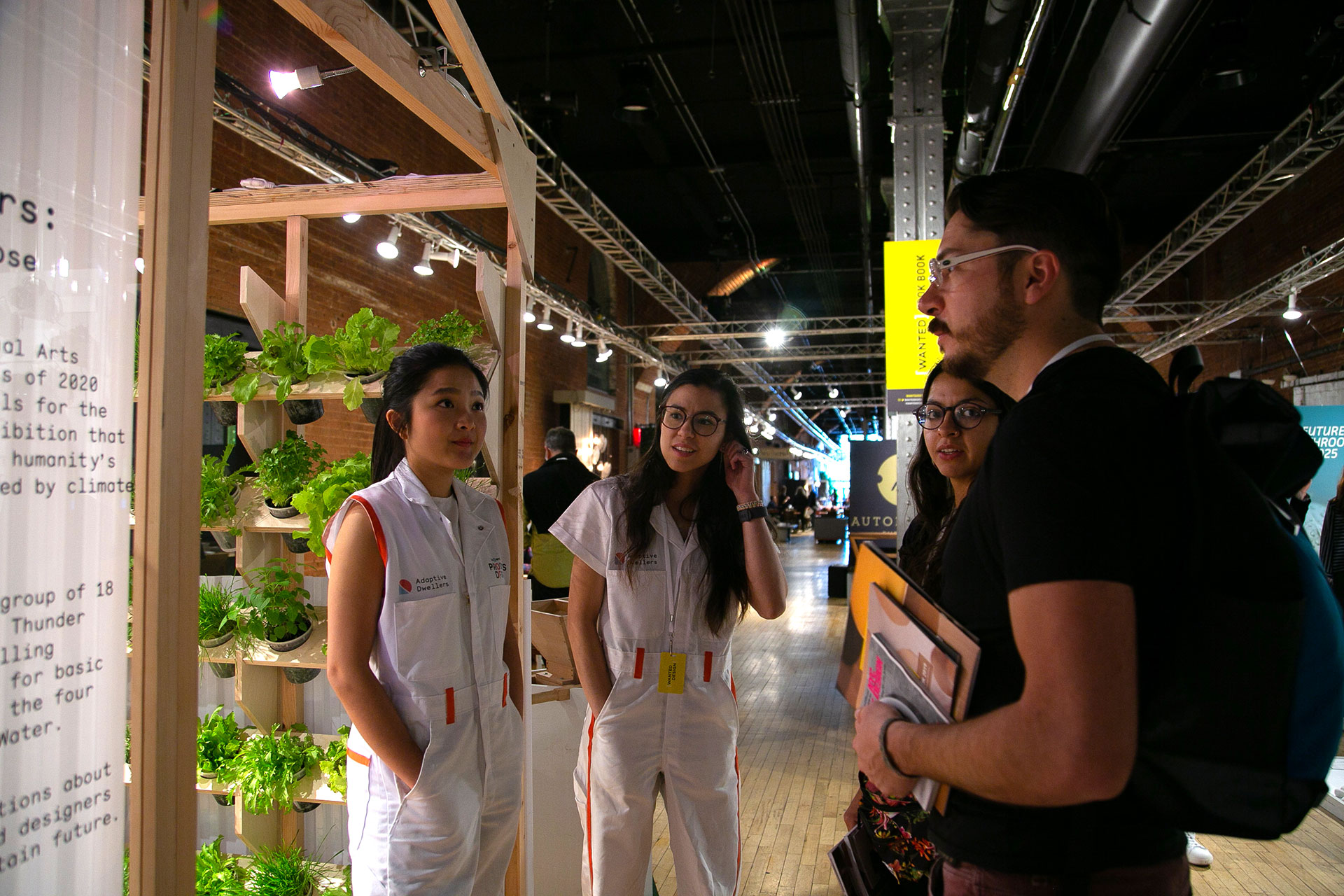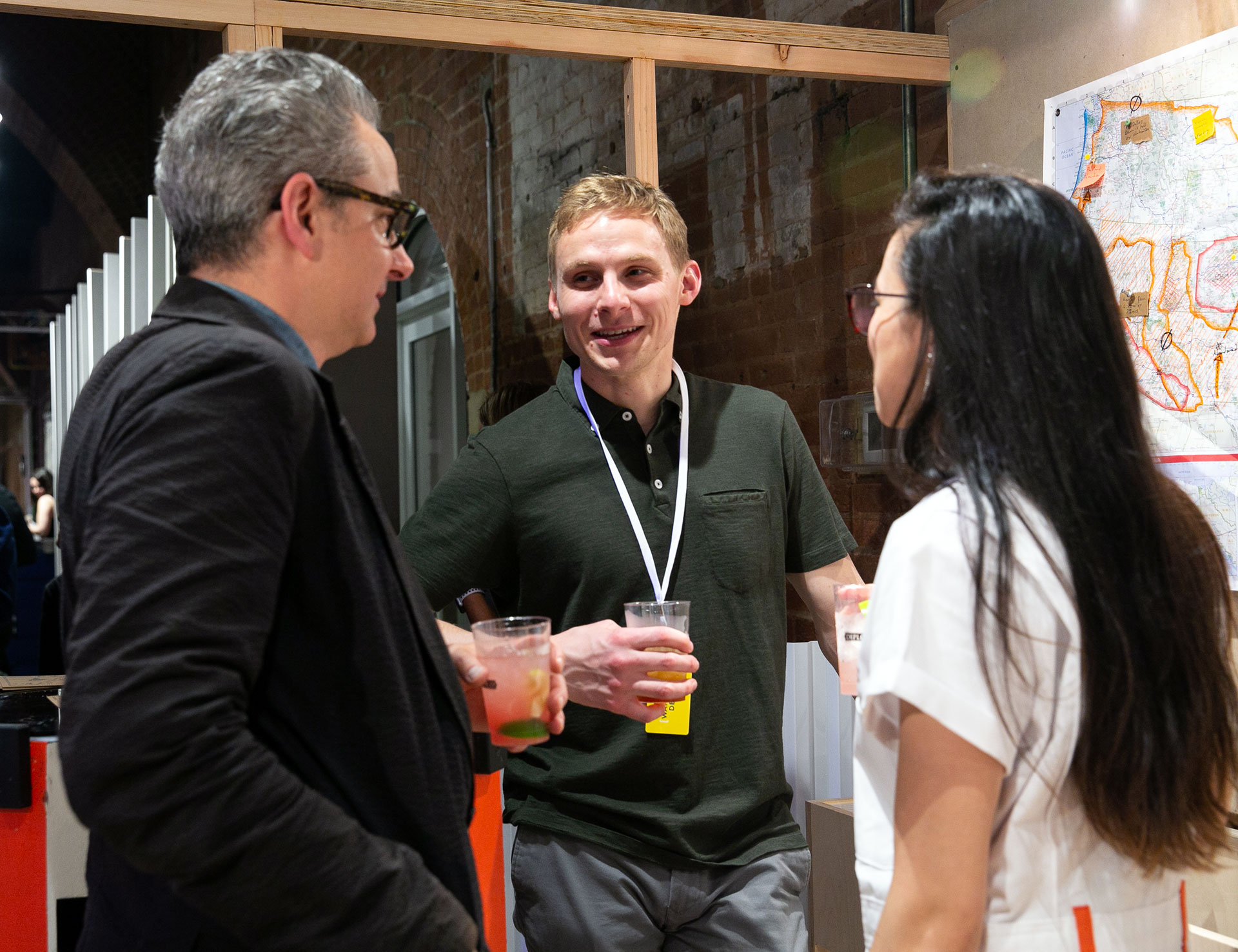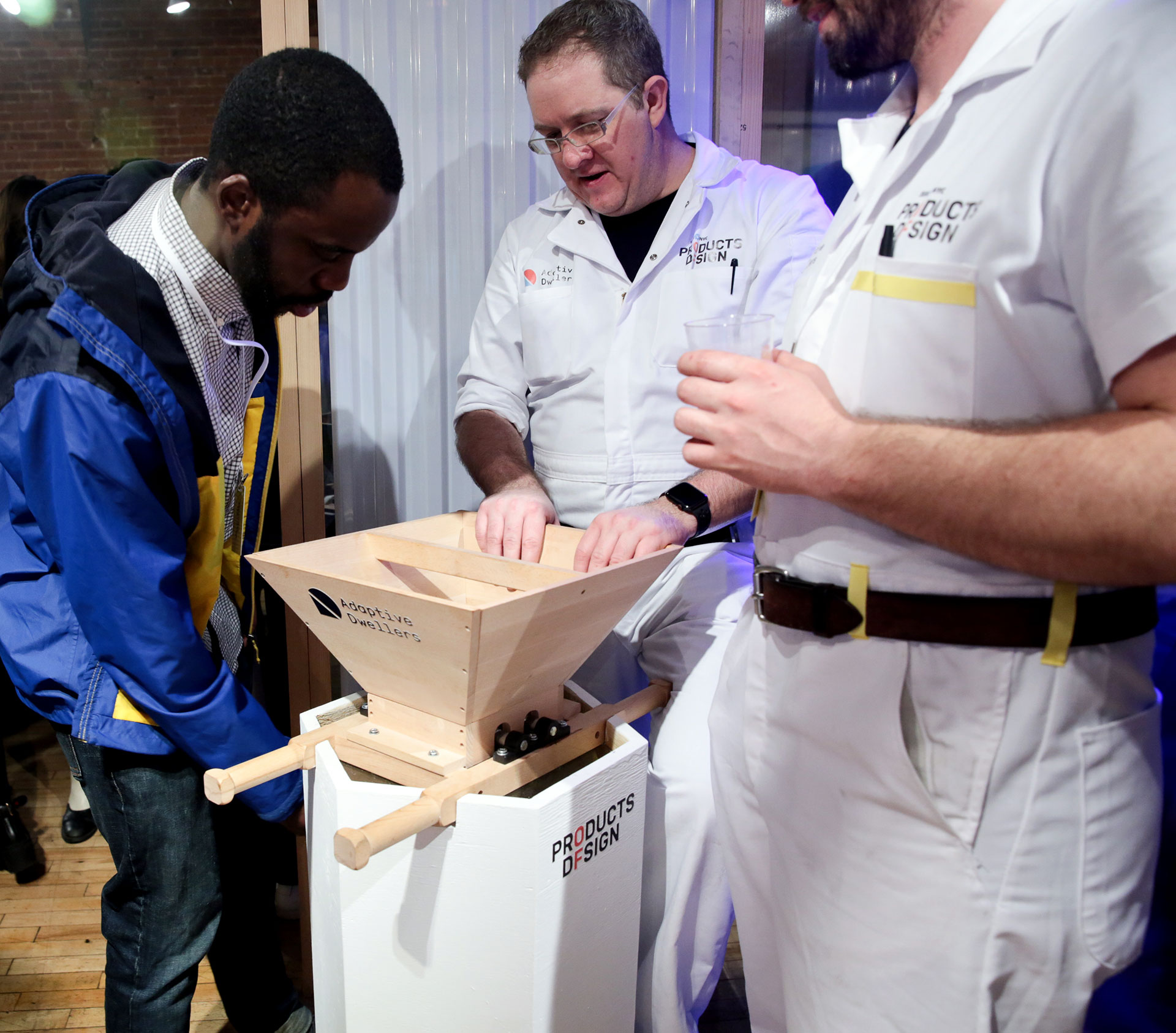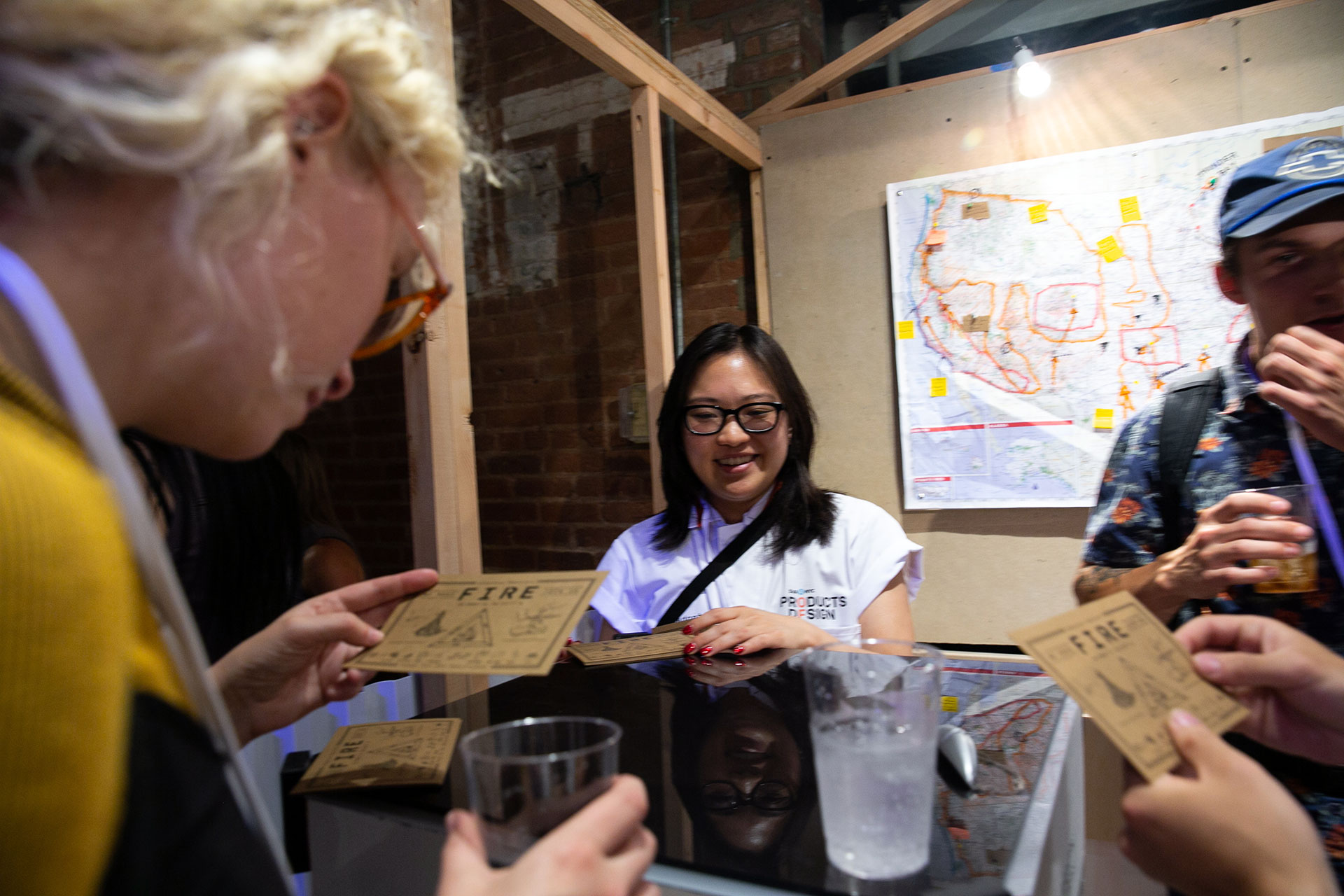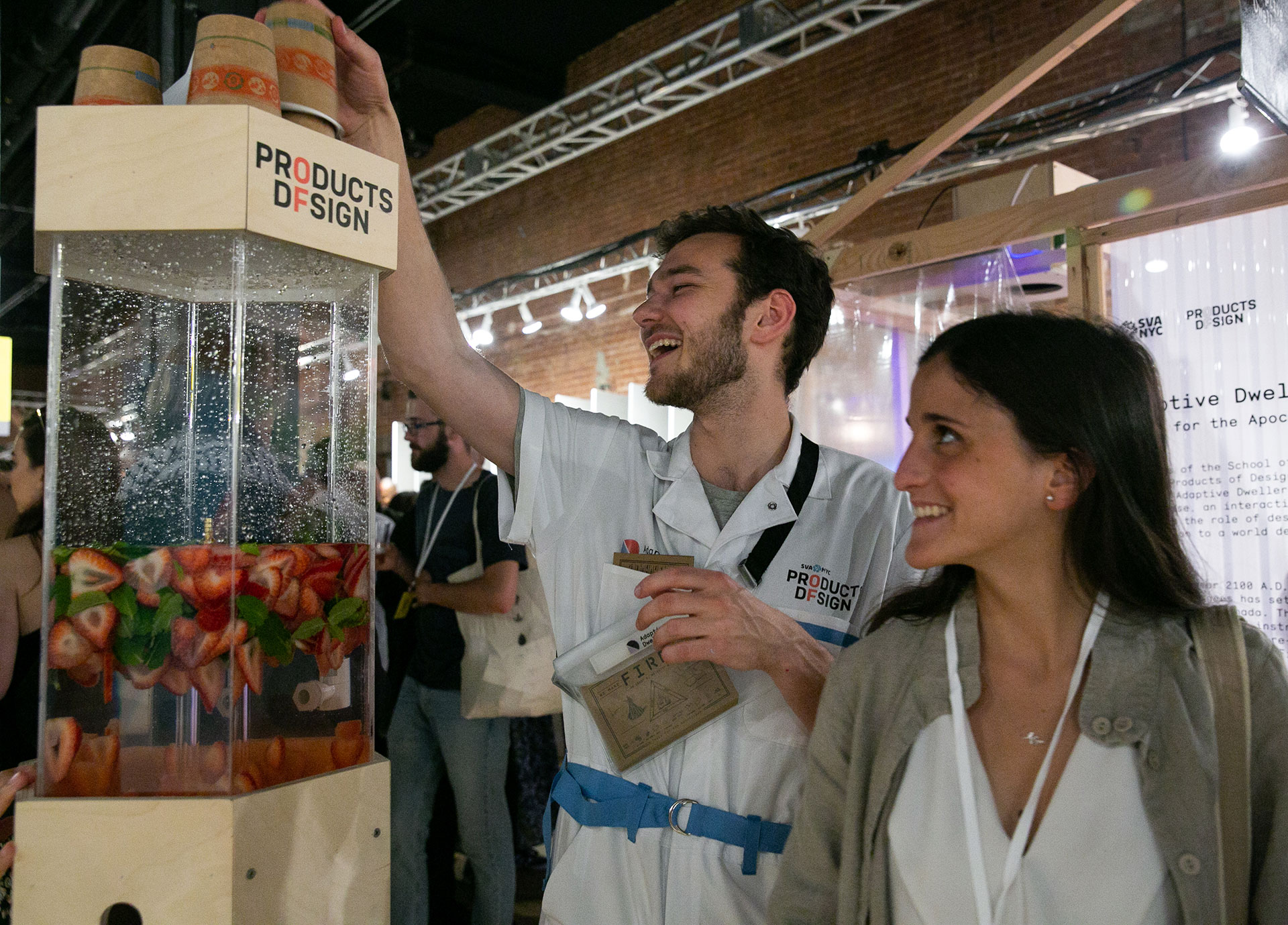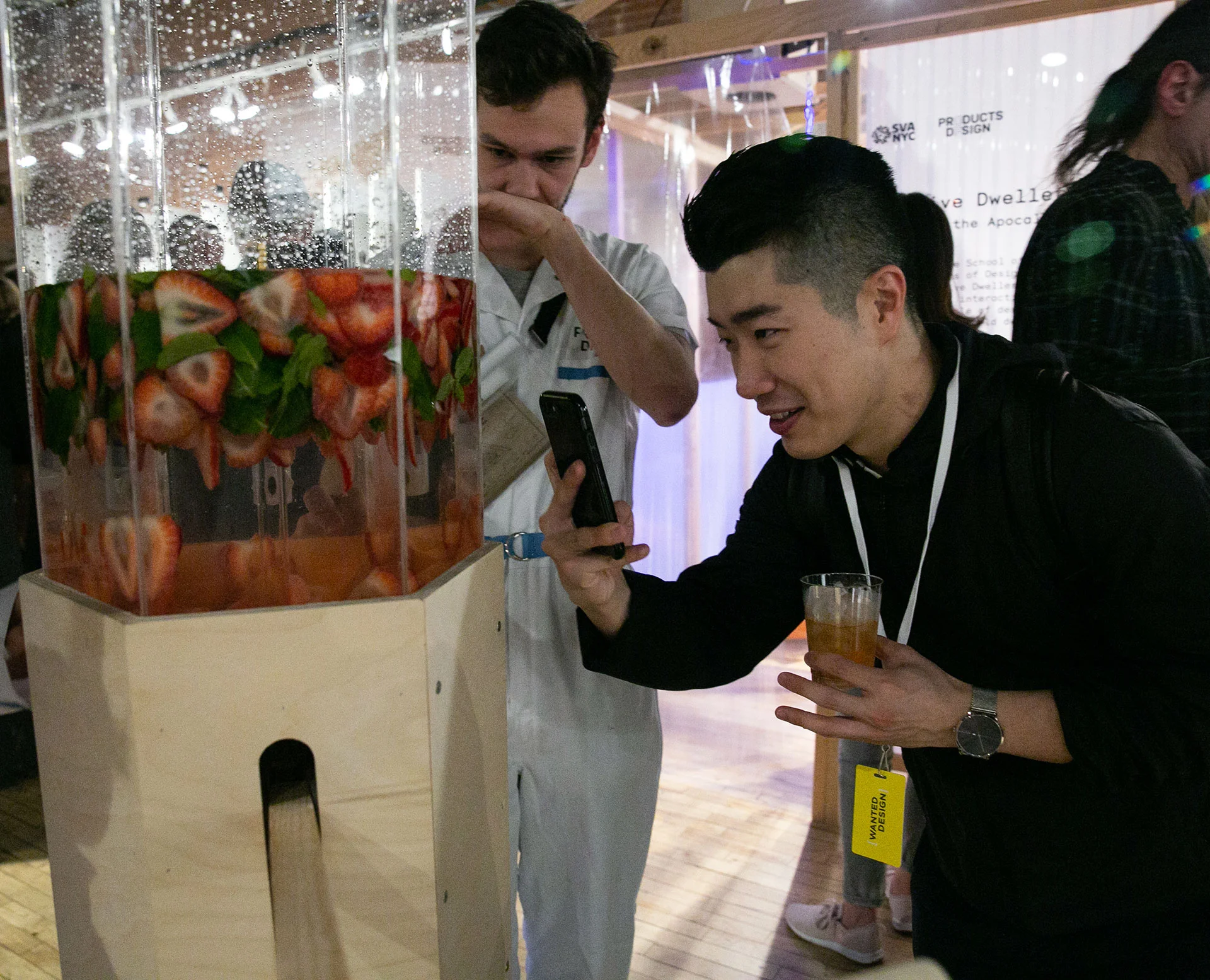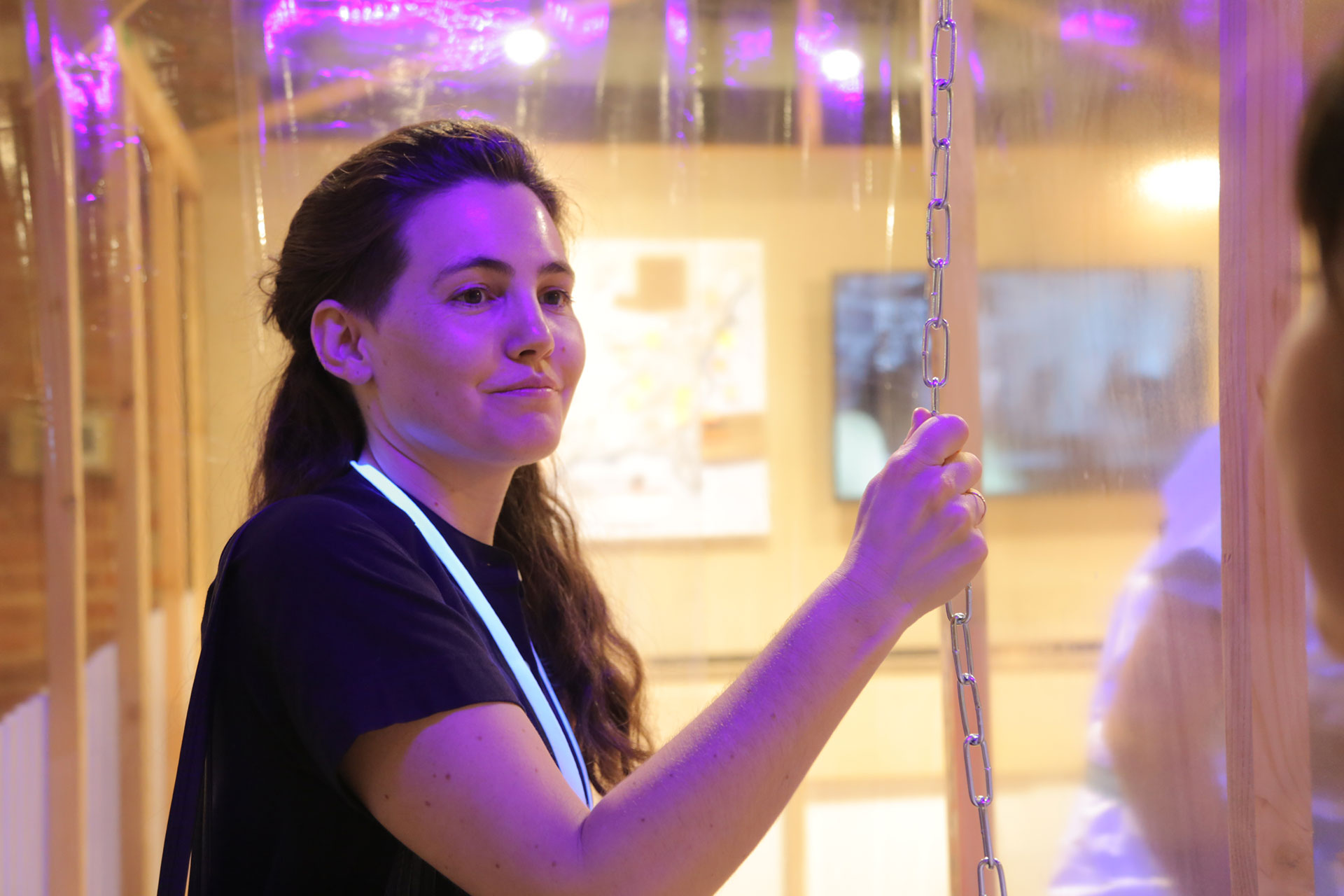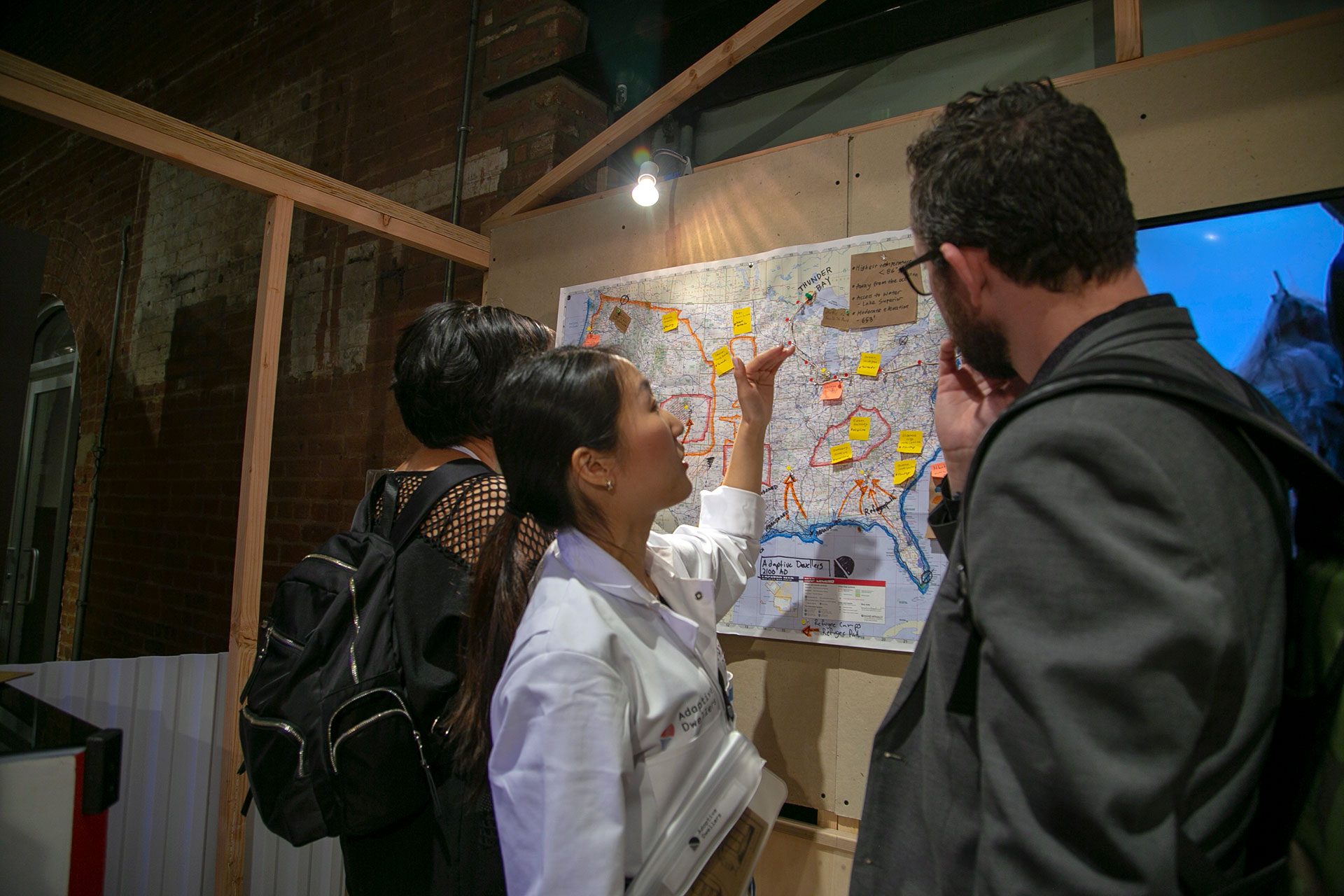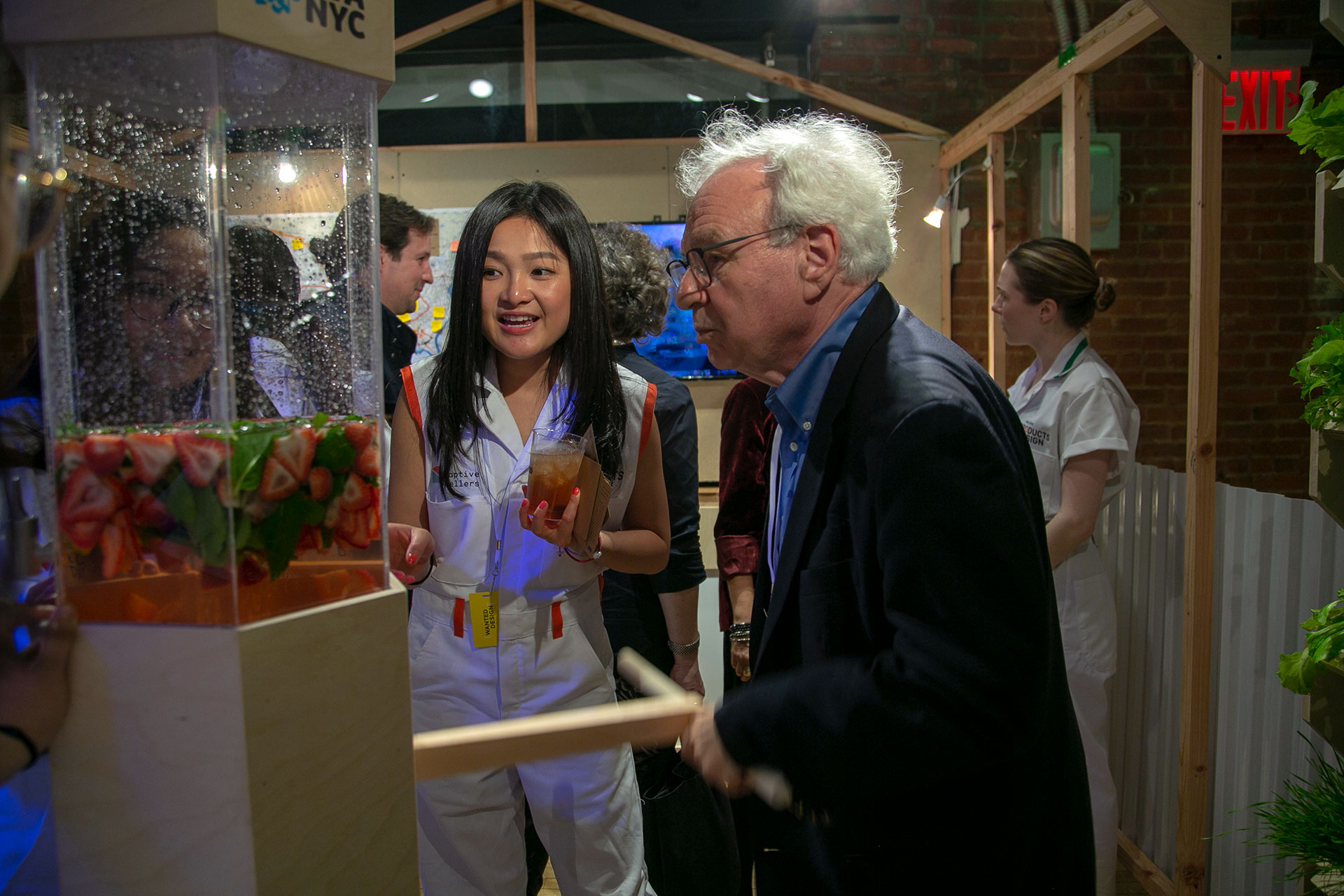ADAPTIVE DWELLERS launches at Wanted Design NYCxDESIGN 2019
For the seventh annual showcase at Wanted Design, and as part of NYCxDesign 2019, students of SVA’s MFA in Products of Design present Adaptive Dwellers, an interactive installation that explores the role of design in humanity’s adaptation to a world devastated by climate change.
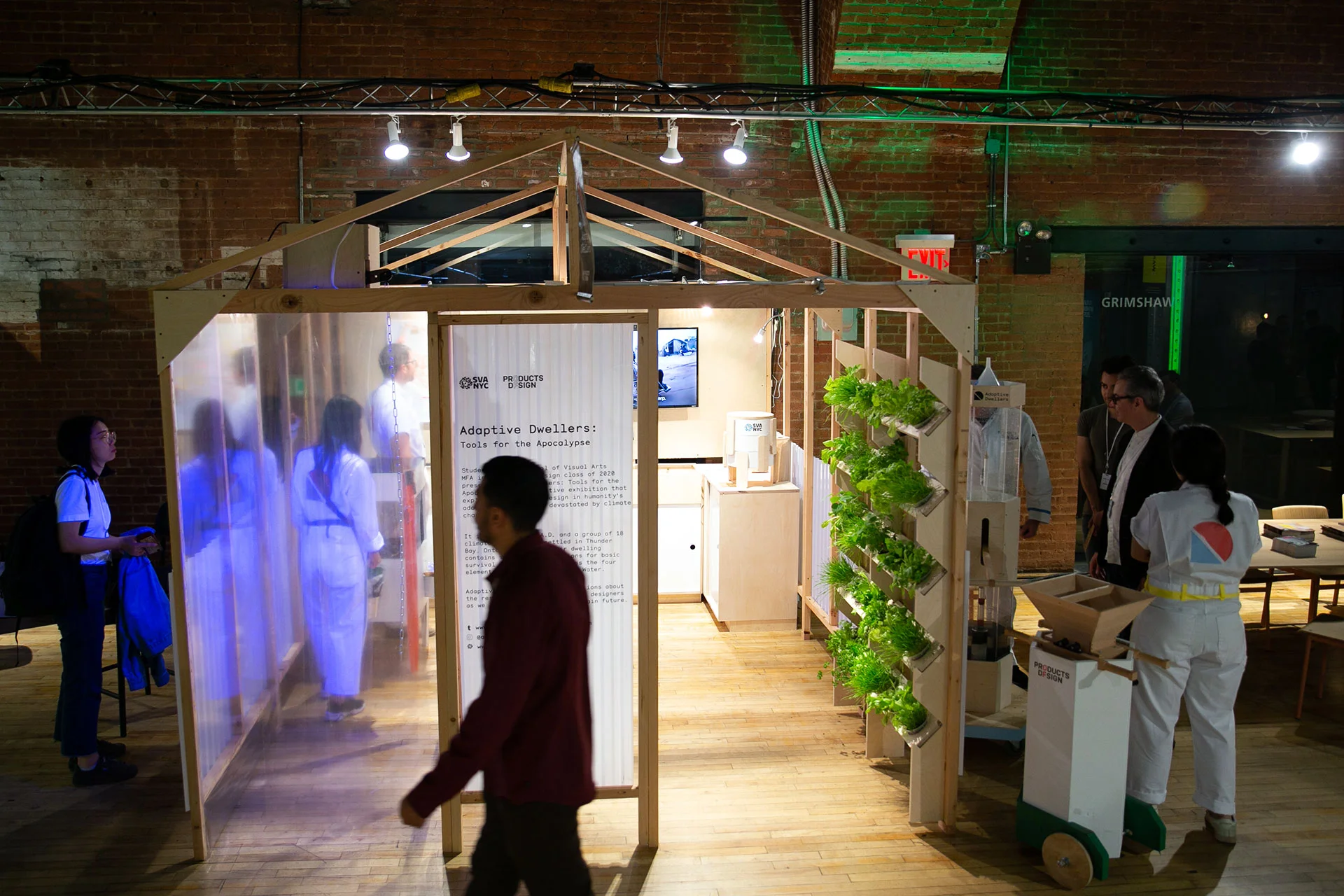
It is year 2100 A.D. and the world has experienced global warming of 4°C, rendering a large percentage of the earth uninhabitable due to heat stress, desertification, water stress, constant flooding, earthquakes, and widespread airborne and vector-borne diseases.
Adaptive Dwellers is an emergent home of today that invites visitors to learn essential survival skills and urges their participation in mitigating the environmental crisis.
“Throughout the 21st century, humanity failed to mitigate the effects of climate change. Renewables made virtually no dent in the use of fossil fuels; agricultural production failed to sustain the exploding global population, and the destructive practices of deforestation and fracking continued to contribute to the destruction of the world,” posits the designers. “Adaptive Dwellers is a speculative home for a group of 18 apocalypse survivors—futurecasting how they continue to live and survive with the help of tools. But it is also an emergent home of today that invites visitors to learn essential survival skills and urges their participation in mitigating the environmental crisis. Projecting its location in the city of Thunder Bay, Ontario, Canada—where the effects of climate change have not been as sever, the home invites the rest of the world to come and learn to adapt.
The dwelling contains tools and instructions for basic survival skills that re-harness the four elements: Air, Earth, Fire and Water.
AIR
Guests first enter through the decontamination shower that strips away airborne contaminants. Climate change increases the possibility of contracting diseases through bacteria and viruses from melting permafrost, and from dust storms that spread pathogens. In order to come into the house, guests pull down on a metal rope, triggering both the blower as well as the black light that scans the body to begin the cleansing process.

FIRE
Guests are invited to take part in the cooking process by building a fire. They are prompted to select materials that would burn cleanly, and to blow on it to ignite the fire. Through education on the three components of a clean fire, guests walk away with critical survival knowledge.

Water
After the guests learn to build fire, they also learn to filter water. With the increase in runoff, flooding, and sea level rise, the quality of earth’s water is diminished. Visitors are invited to pump and filter the clear hexagonal water tanks, learning about filtration materials and techniques.

Earth
Climate change effects precipitation patterns and water quality, and as a result, devastates soil quality. Agriculture becomes more and more difficult, since extreme downpours cause increased runoff and erosion, stripping healthy soil of key nutrients needed to sustain agriculture. Guests are invited to grind their compostable leftovers to be fed to worms in the vermicompost display. These nutrient rich vermicasts are used to fortify soil for agricultural purposes, represented by the vertical farm wall at the booth.

Check out lots more photos below!

